Who Designed the 1949 Ford?
By Jim and Cheryl Farrell
There’s probably more controversy today about where the design of the 1949 Ford came from than ever before. Designers George Walker, Richard Caleal, Bob Bourke, and Bob Koto have all, at one time or another, claimed some credit for it. Others claim the design came from an unused or discarded Studebaker design. Bourke believed he designed the spinner grille for the ‘’49 Ford based on similar spinner grilles he had previously designed of Studebaker proposals. Ford photographs seemed to have solved that issue of the grille design, and now it’s generally accepted that Joe Oros came up with the spinner grille on the ’49 Ford. Almost everything else is still up in the air with the multiple claims as to who designed what features on the car. Hopefully, time will tell us more.
Here’s the short story of how the design of the ’49 Ford came about. Henry Ford II was young and inexperienced, so a seasoned GM executive named Ernie Breech was hired to teach Henry the car business. Bob Gregorie, then the head of the Ford Design Department, had already designed the two ’49 Ford proposals Ford planned to market. When Breech first got to Ford, he didn’t think the smaller Ford car would make money, so he arranged for its sale to Ford of France. The larger of Gregorie’s Ford proposals Breech thought was too big to be profitable, so he proposed a contest between Gregorie and Breech’s friend George Walker to design new ’49 Ford proposals. Whoever’s car was chosen would become the new ’49 Ford.
The small Walker proposal was designed by Caleal, Koto (maybe) and Bourke (maybe), but Walker’s full-sized clay model for the contest itself was designed mainly by Walker employees Joe Oros and Elwood Engel, loosely following the small model Caleal, maybe Koto and maybe Bourke had designed. The Walker proposal as built beat out Gregorie’s proposal to become the ’49 Ford, and subsequently Gregorie resigned.
It has been often said that the ’49 Ford was the car that saved Ford. Overstatement or not, the ’49 Ford was almost all-new (except for the flathead V-8 engine) from the ground up. Production for the 1949 model year came to 1,118,308 cars, and earned Ford a $77 million profit. It beat out Chevrolet sales for 1949 by about 100,000 cars. The ’49 Ford also helped solidify young Henry and Breech as the leaders at Ford.
The photos were taken by Ford photographers during the design contest. They were located in what was then called the Ford Industrial Archives. (Now called the Ford Archives.) Many have never before been published. The photographer started with the armatures upon when each full-sized proposal was started. Unfortunately, the photos end before Ford designer Gil Spear productionized (and modified) the ’49 Ford made by Oros and Engel.
Photos: Ford Design
Books by Jim and Cheryl Farrell
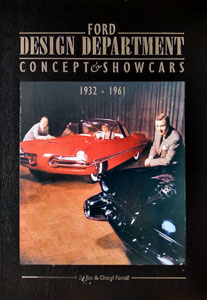
Ford Design Department—
Concepts & Showcars
1999, 10×13, 400 pages, Fully indexed
900 photos. Includes 150+ designers and sculptors, and highlights 100 concept cars.
ISBN 0-9672428-0-0
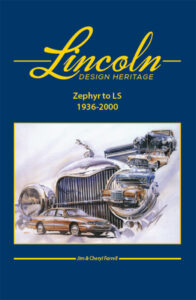
Lincoln Design Heritage:
Zephyr to LS (1936-2000)
2021, 10×13, 480 Pages, Fully Indexed
1,600 photos and illustrations
ISBN 978-0-9672428-1-1
The Ford book is $50 plus $7 S&H (US). The Lincoln book is $85 plus $10 S&H (US). Both books bought together are $110 plus $17 S&H (US). To order, email: cfarrell57@gmail.com

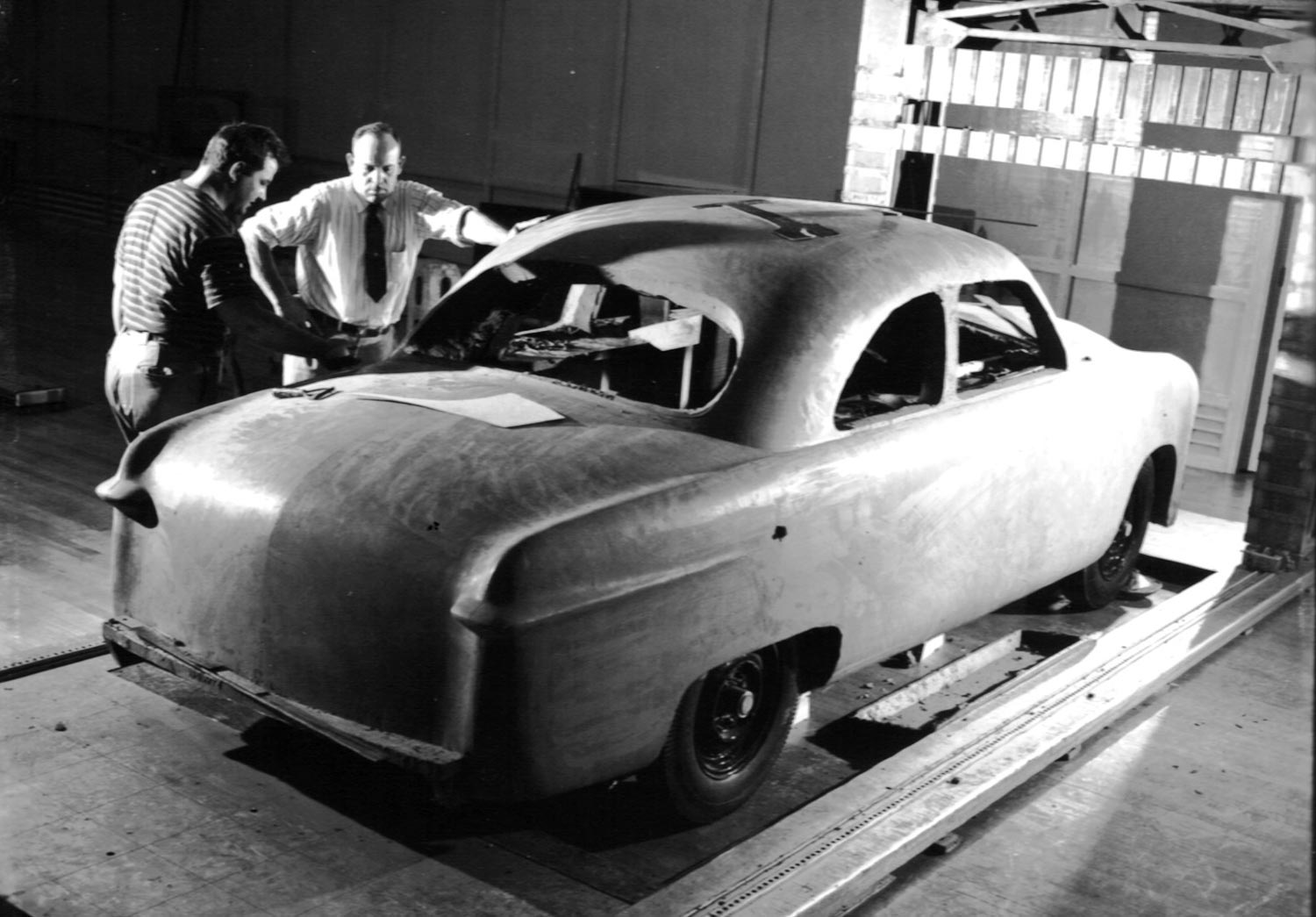
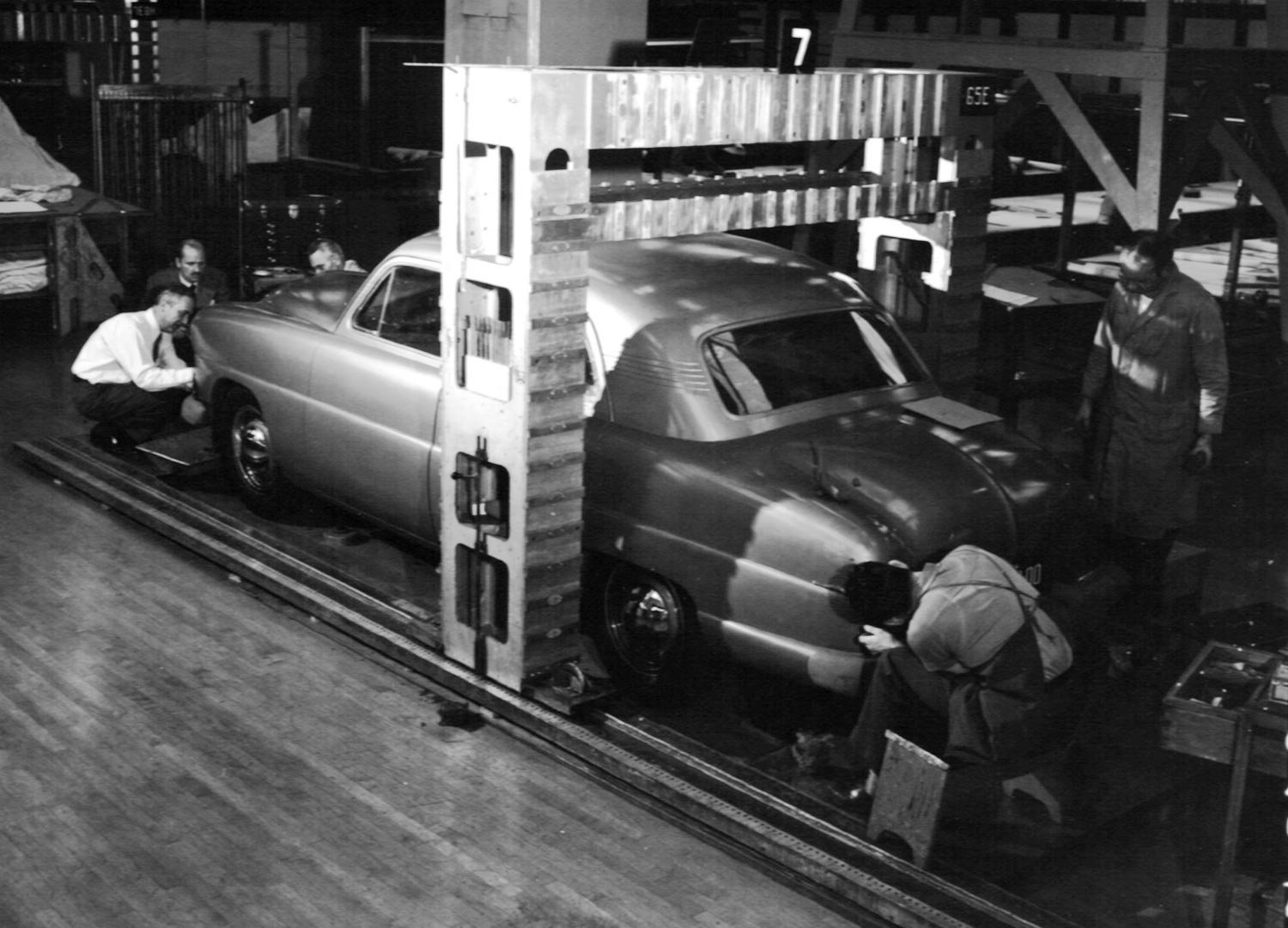
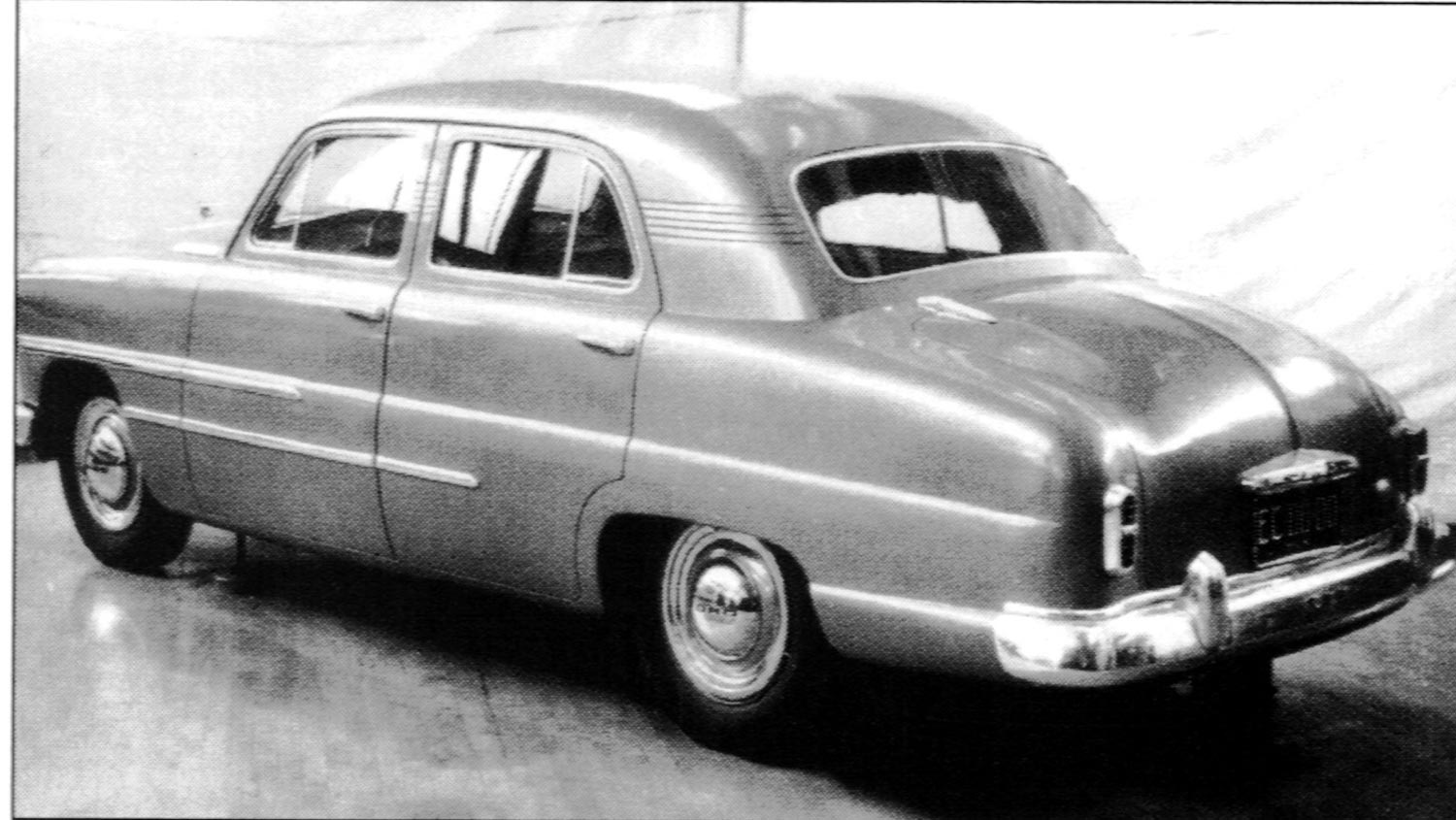
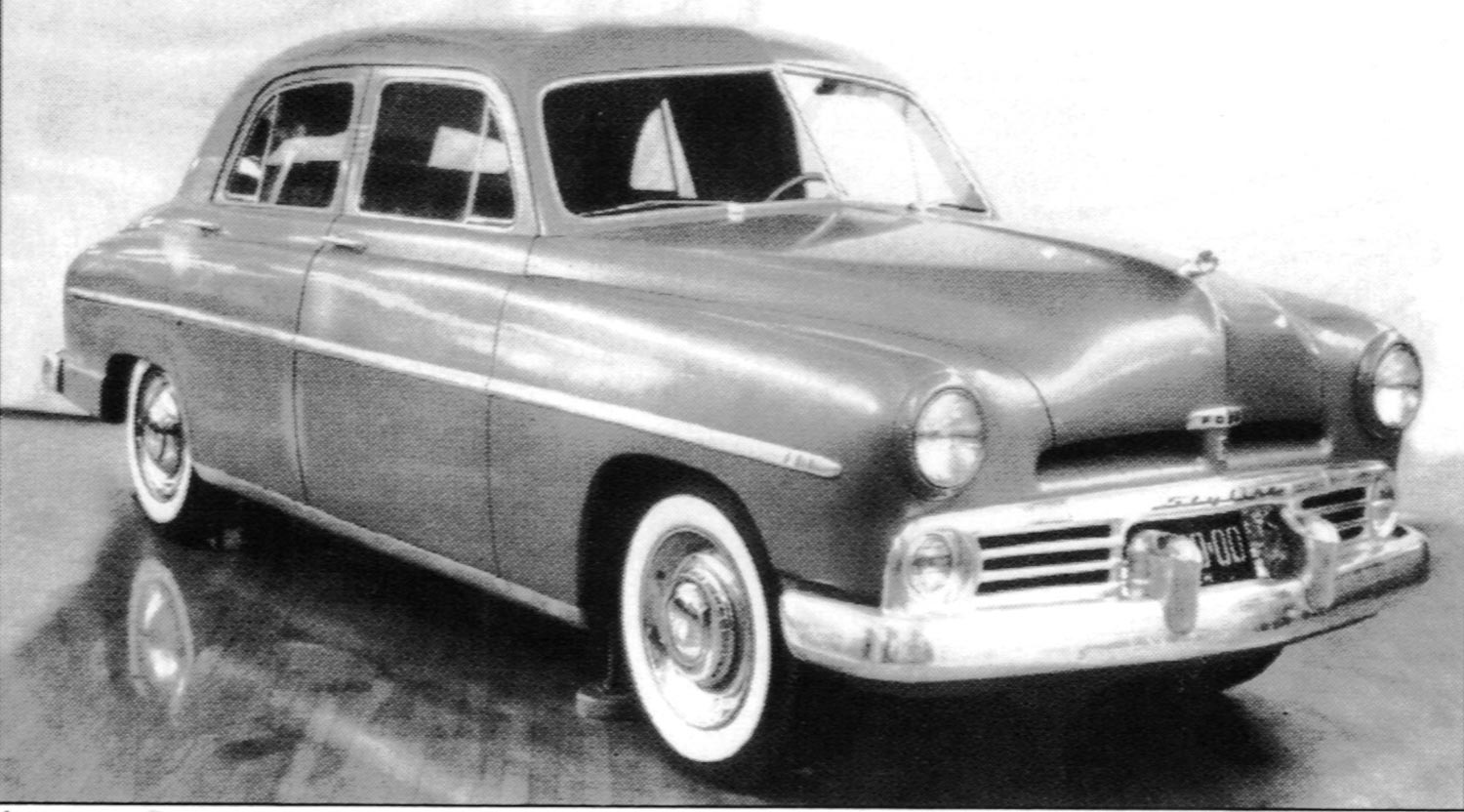
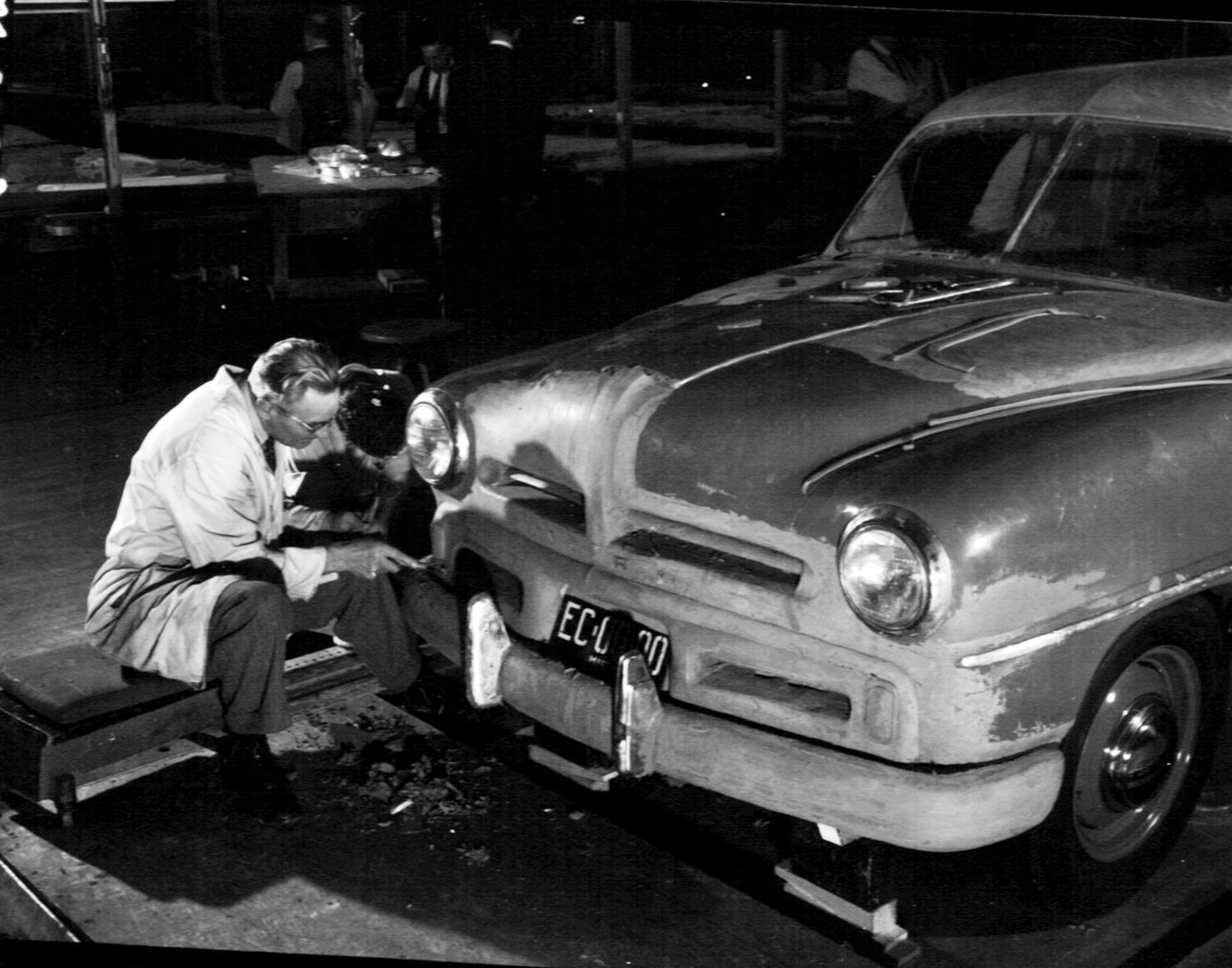
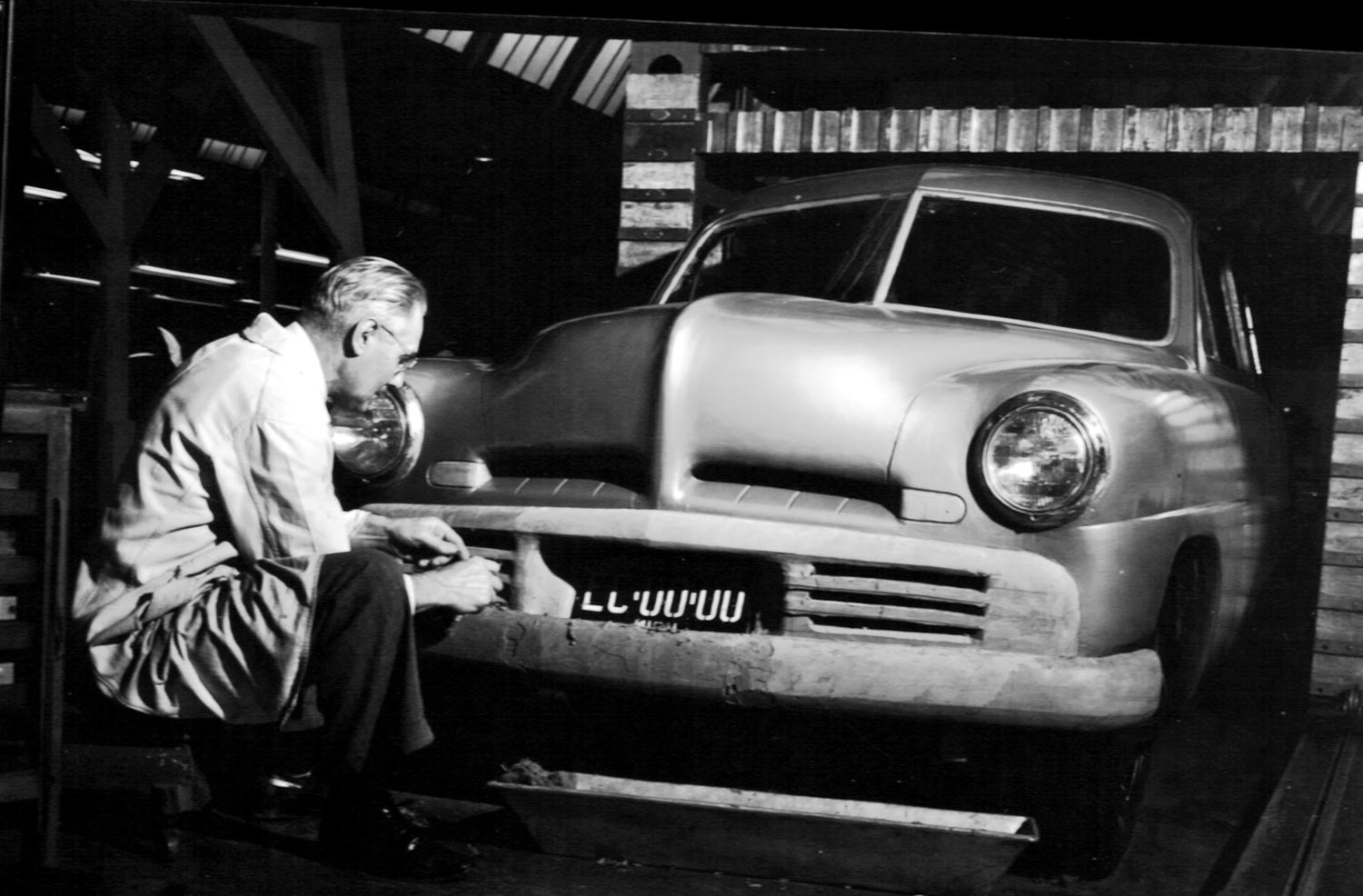
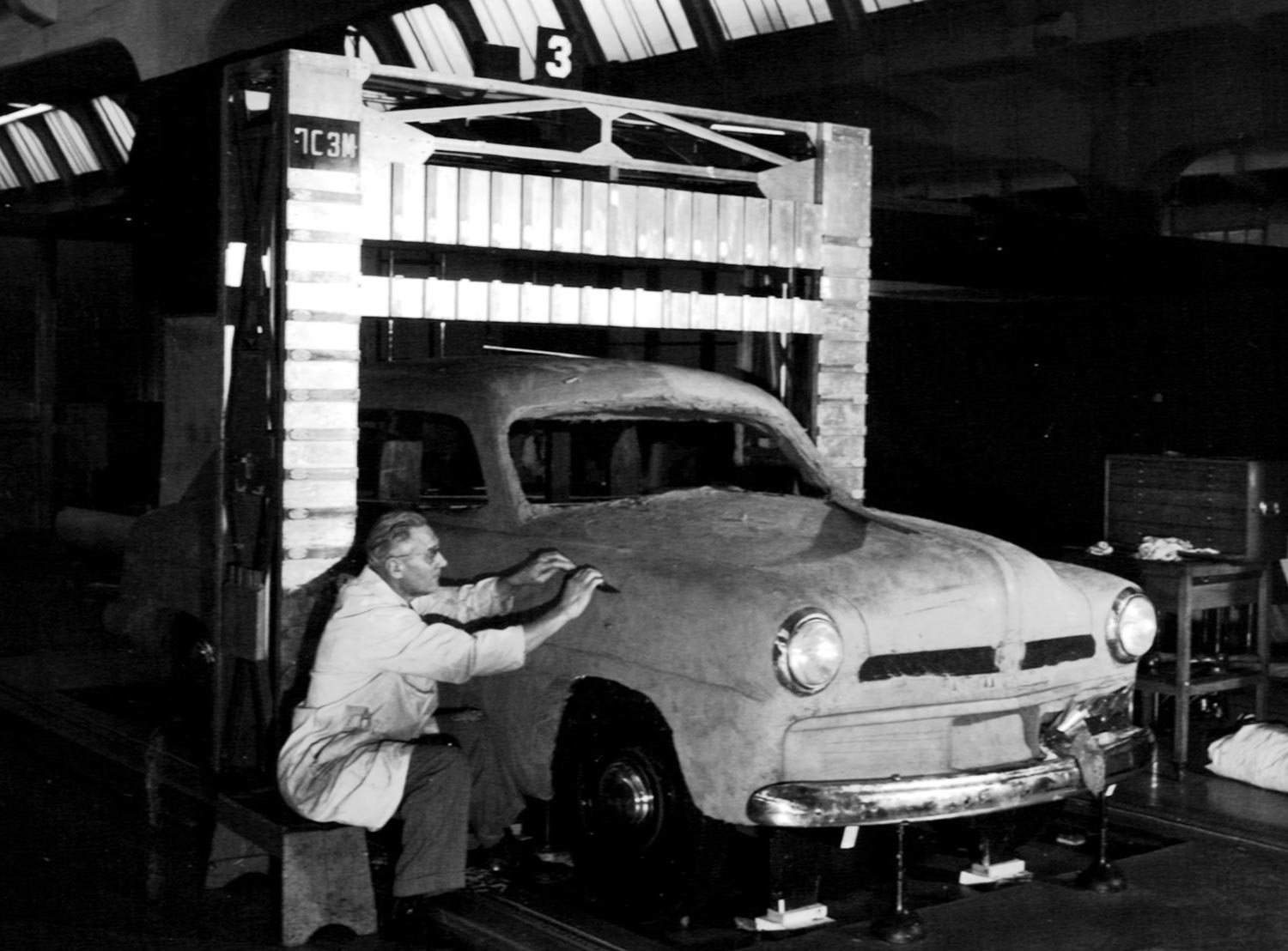
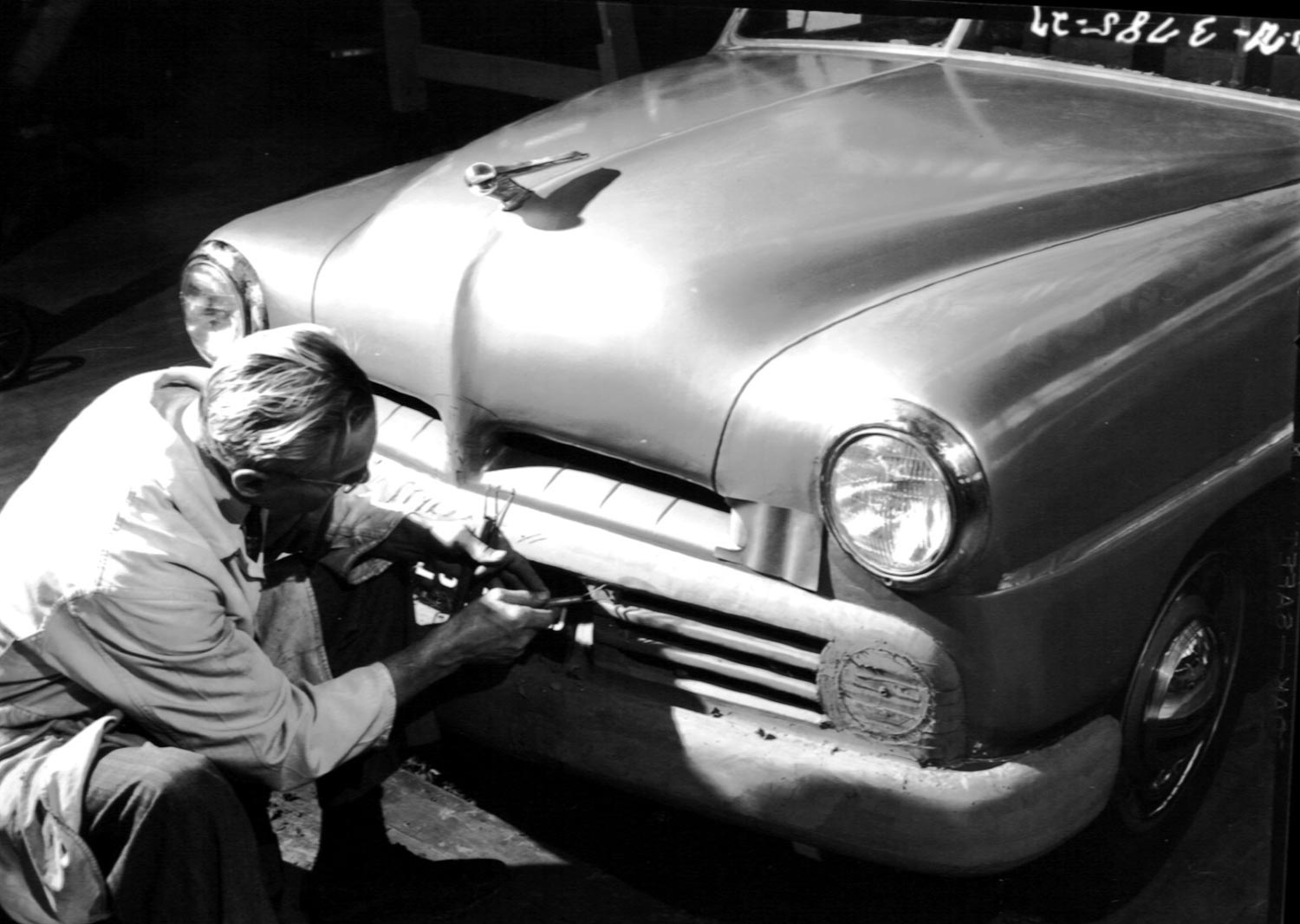
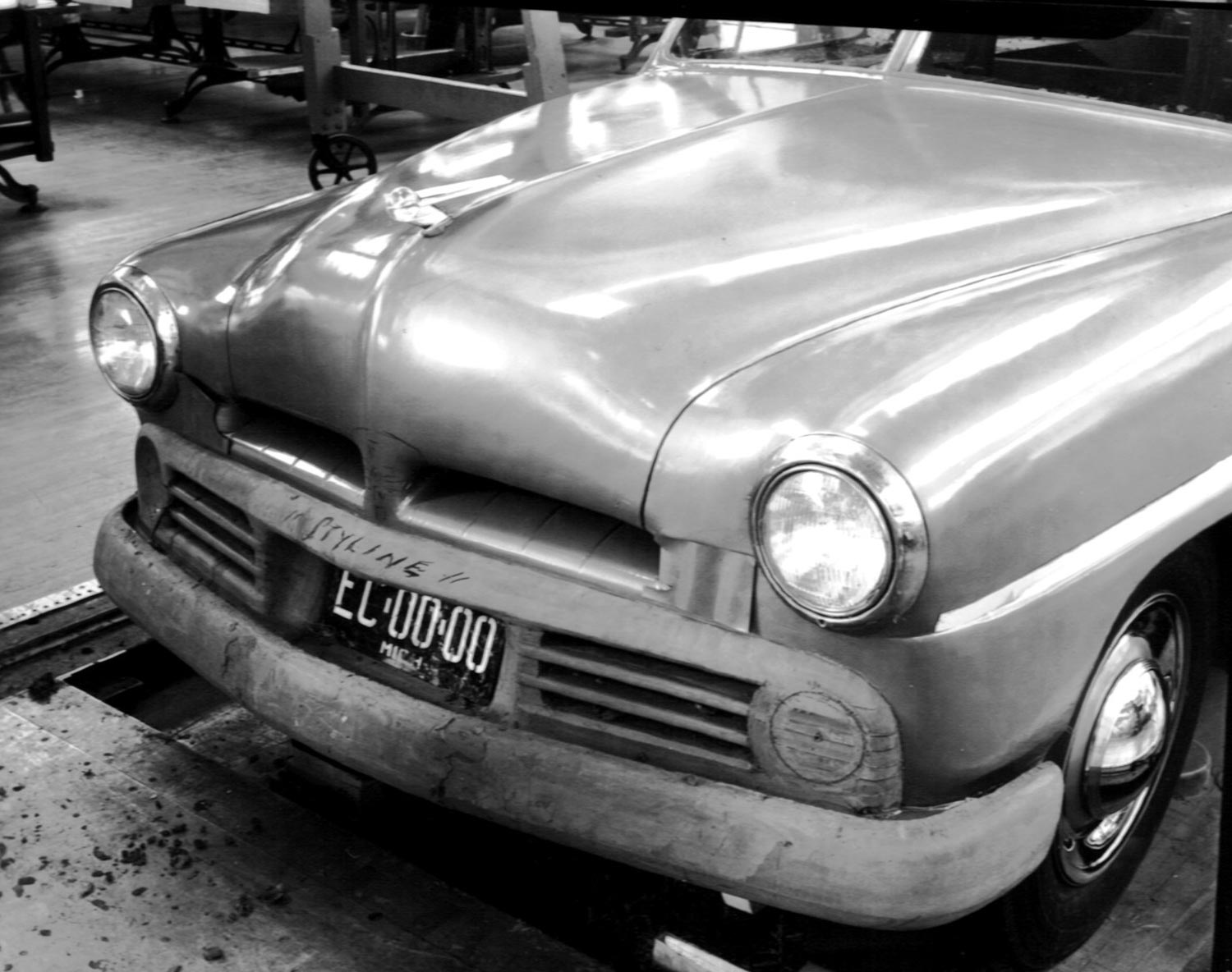
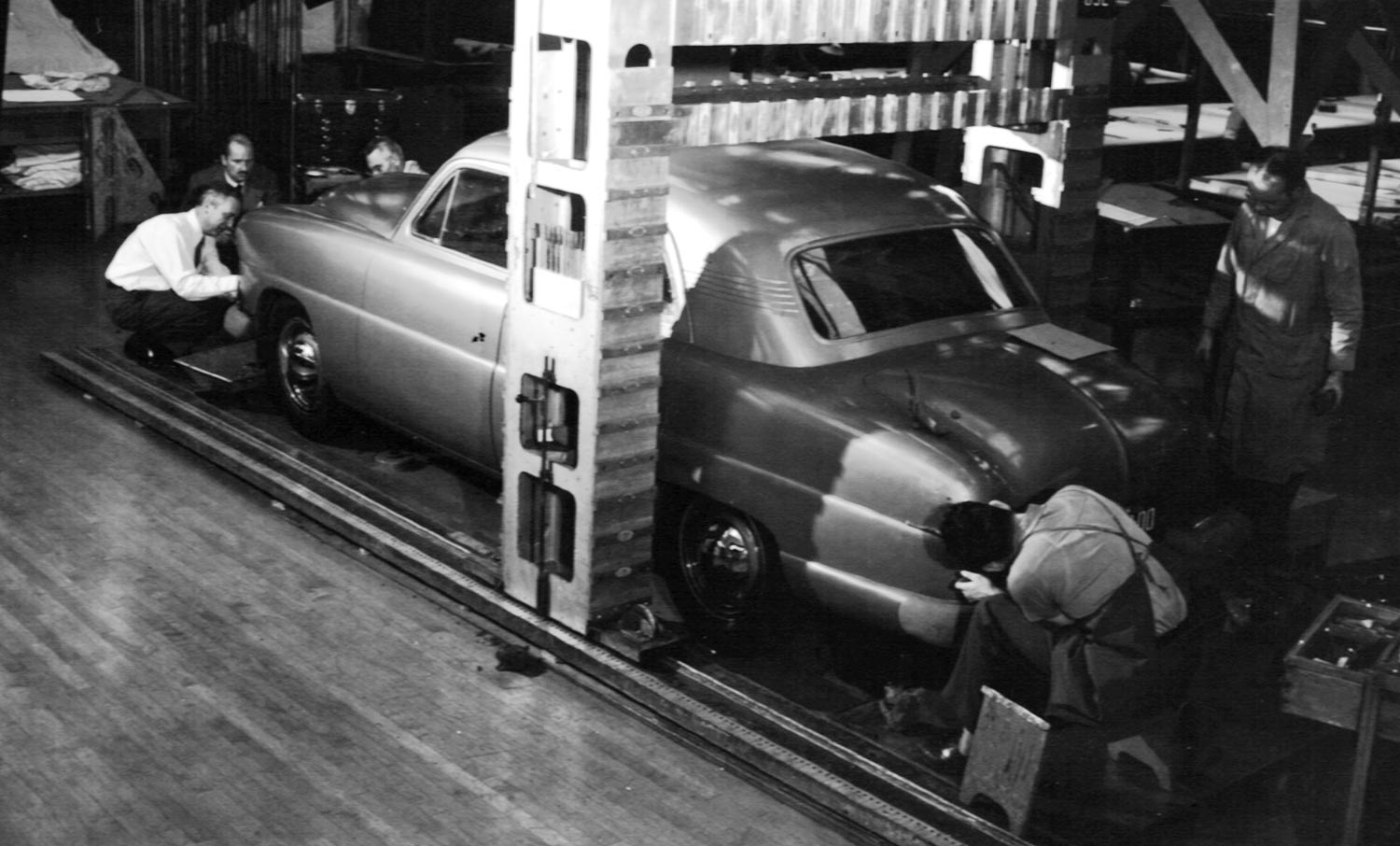
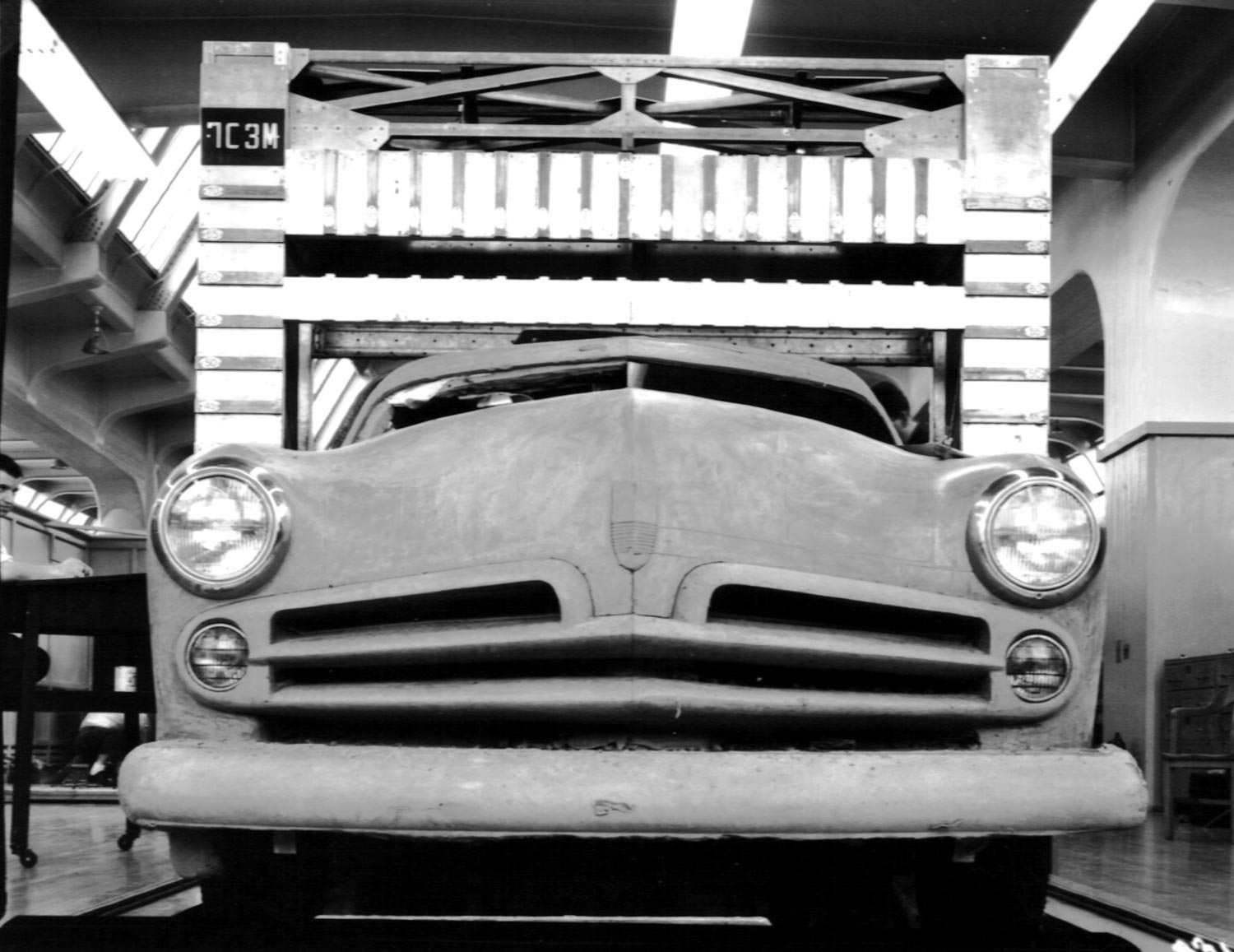
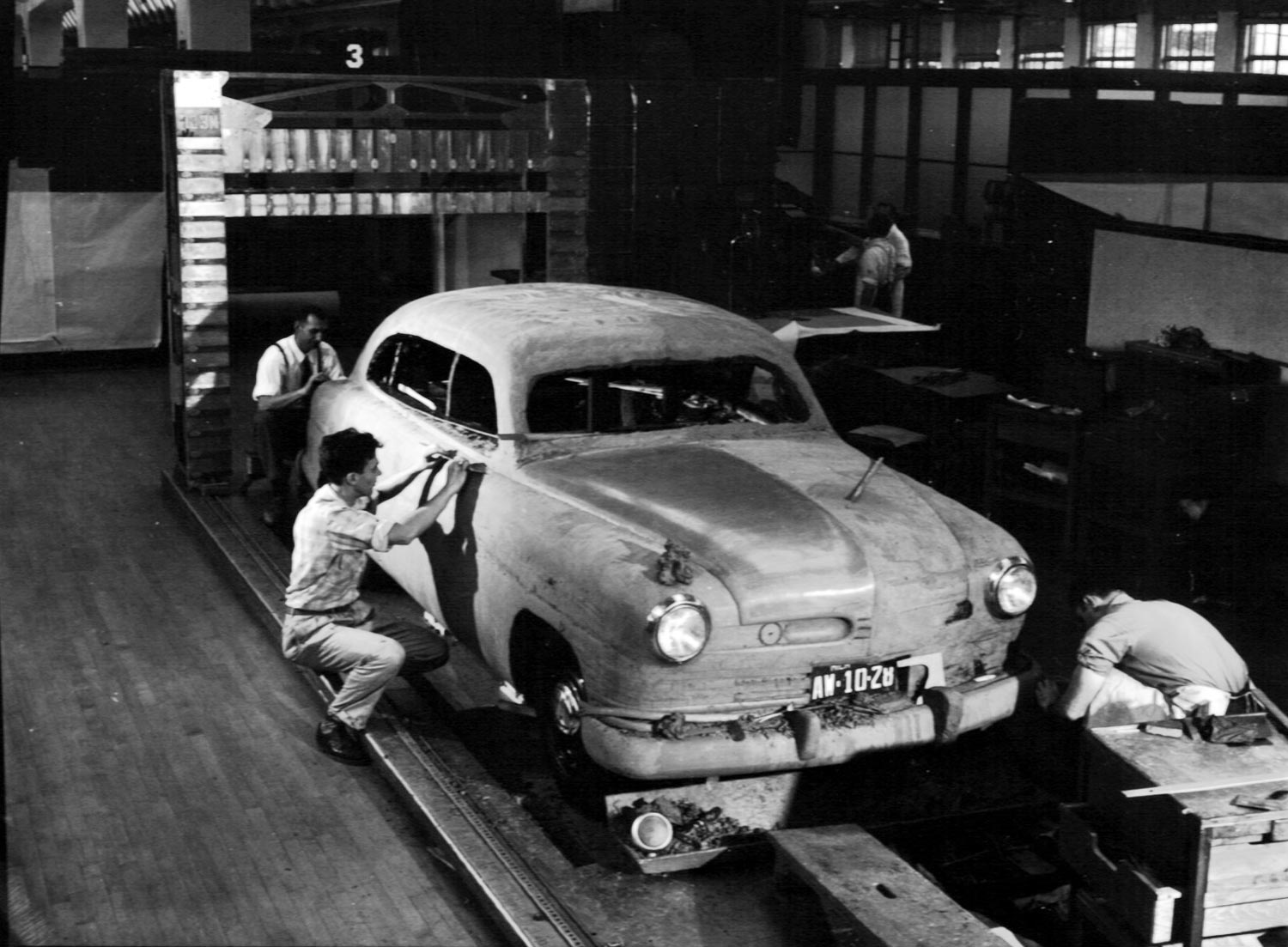
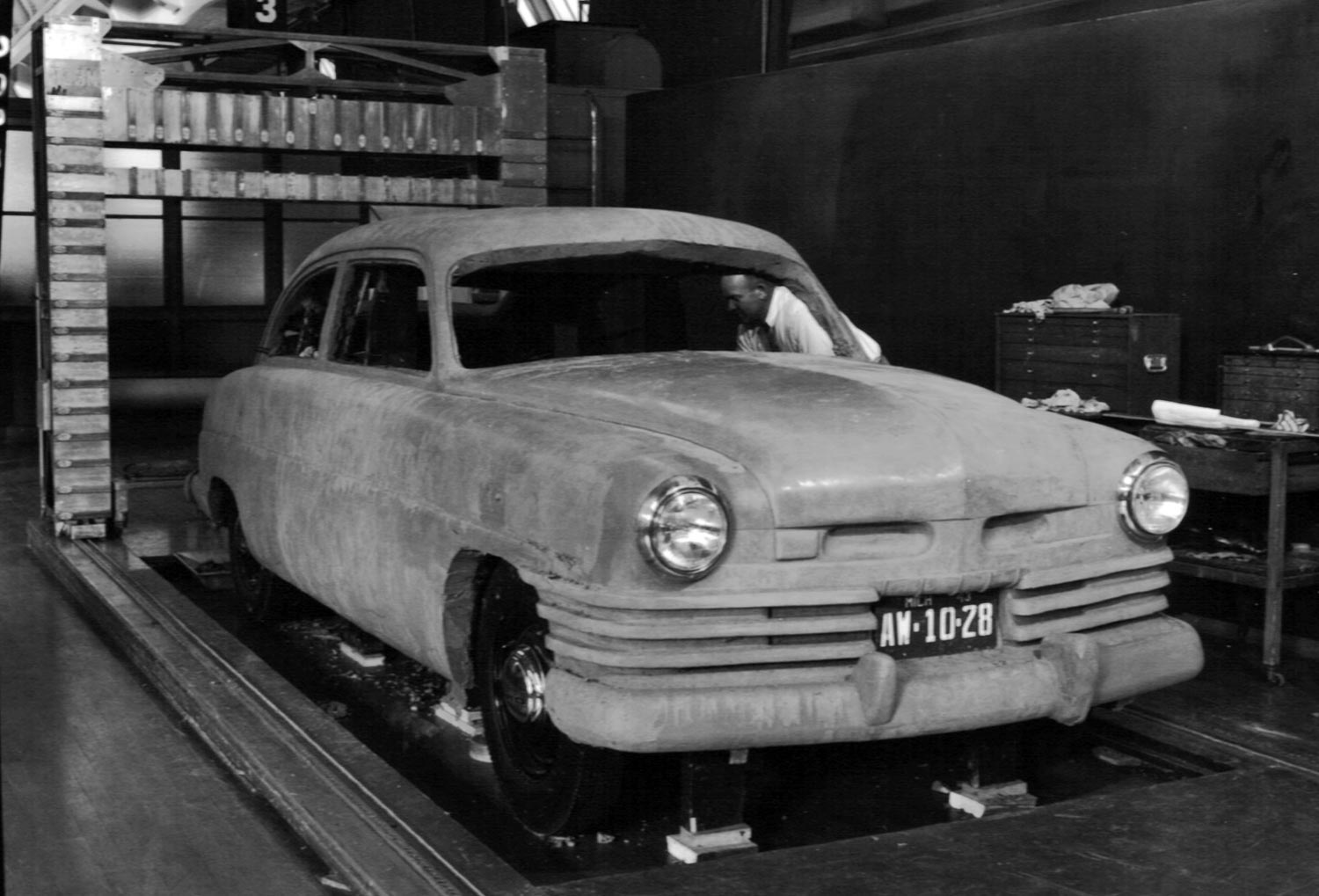
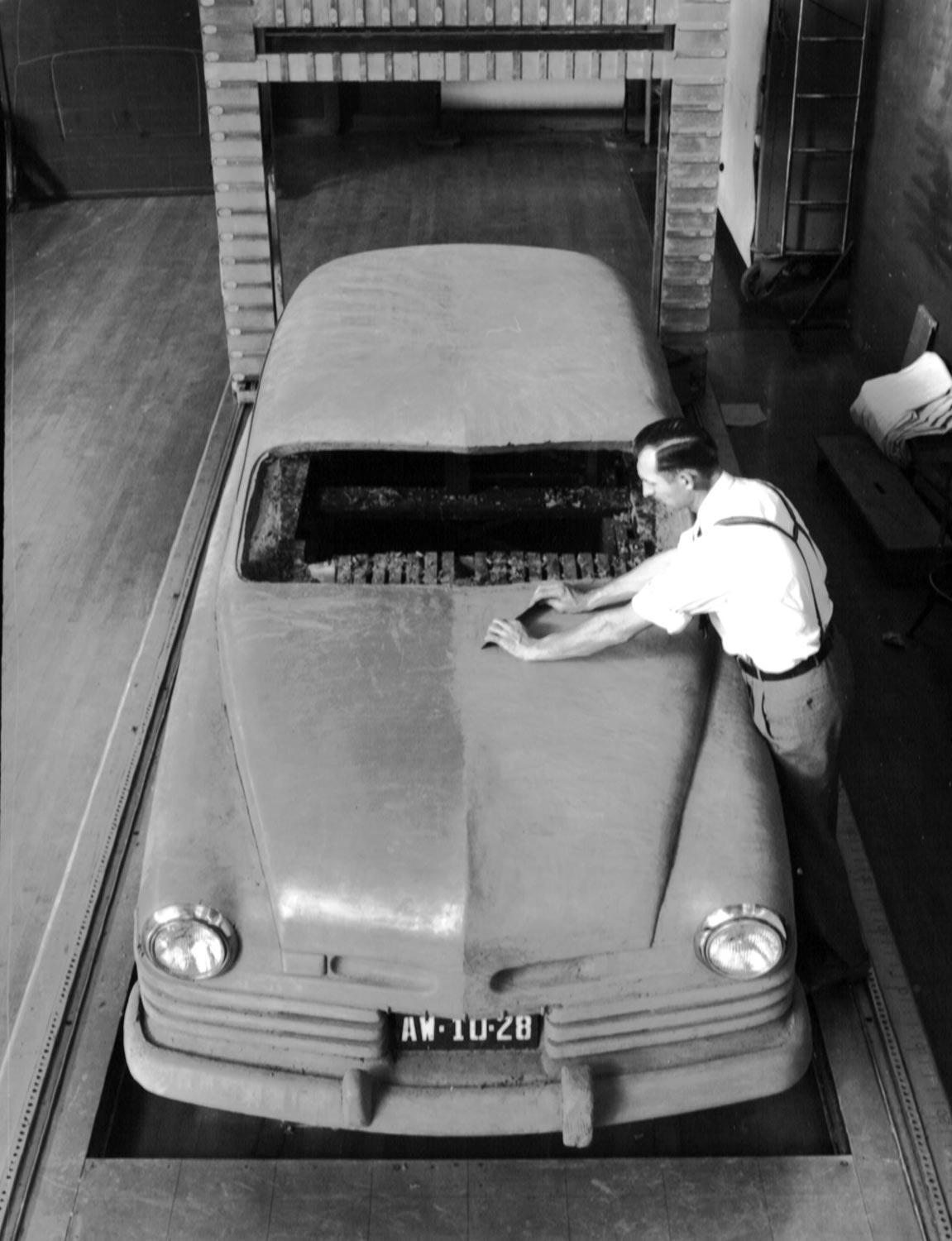
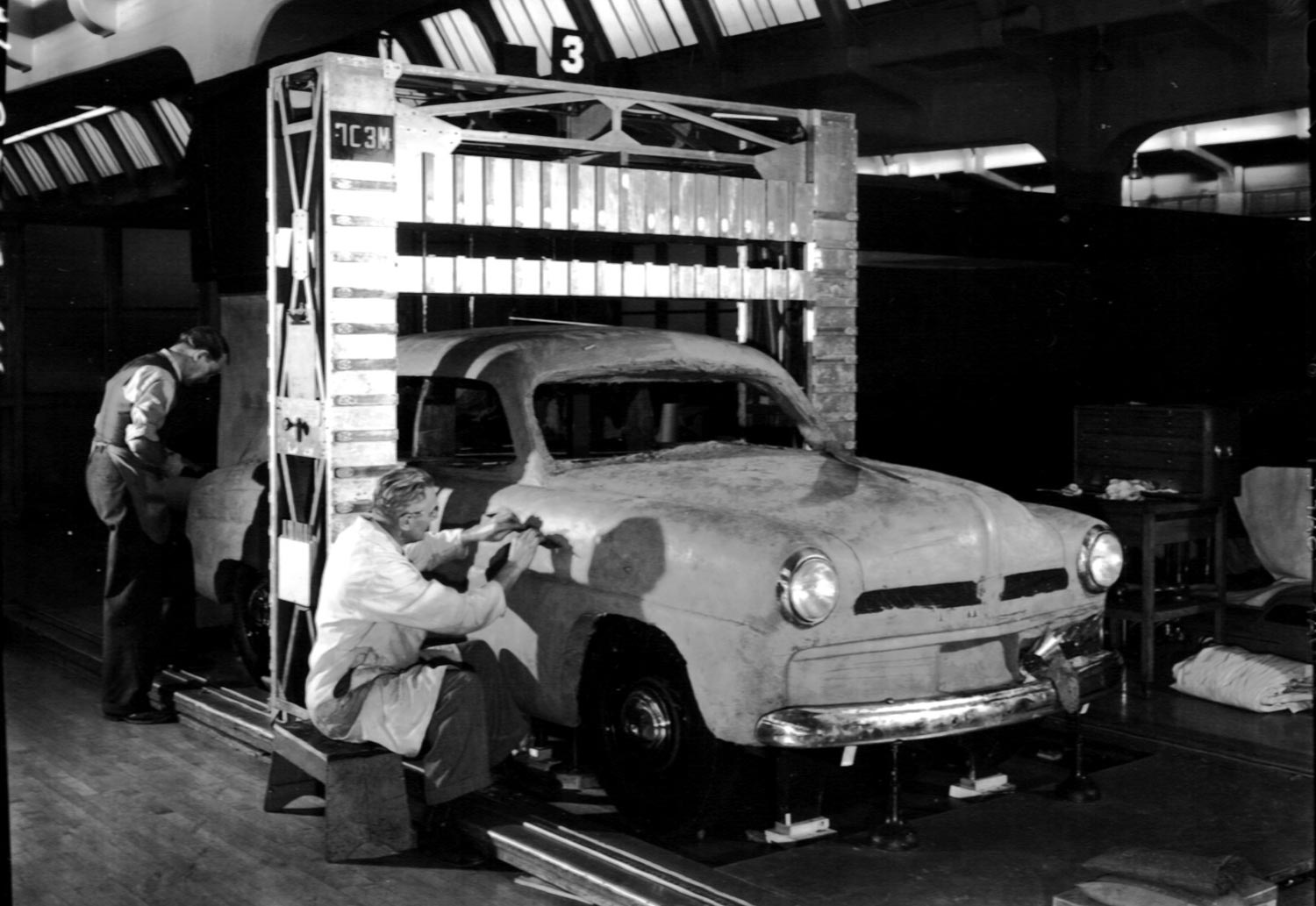
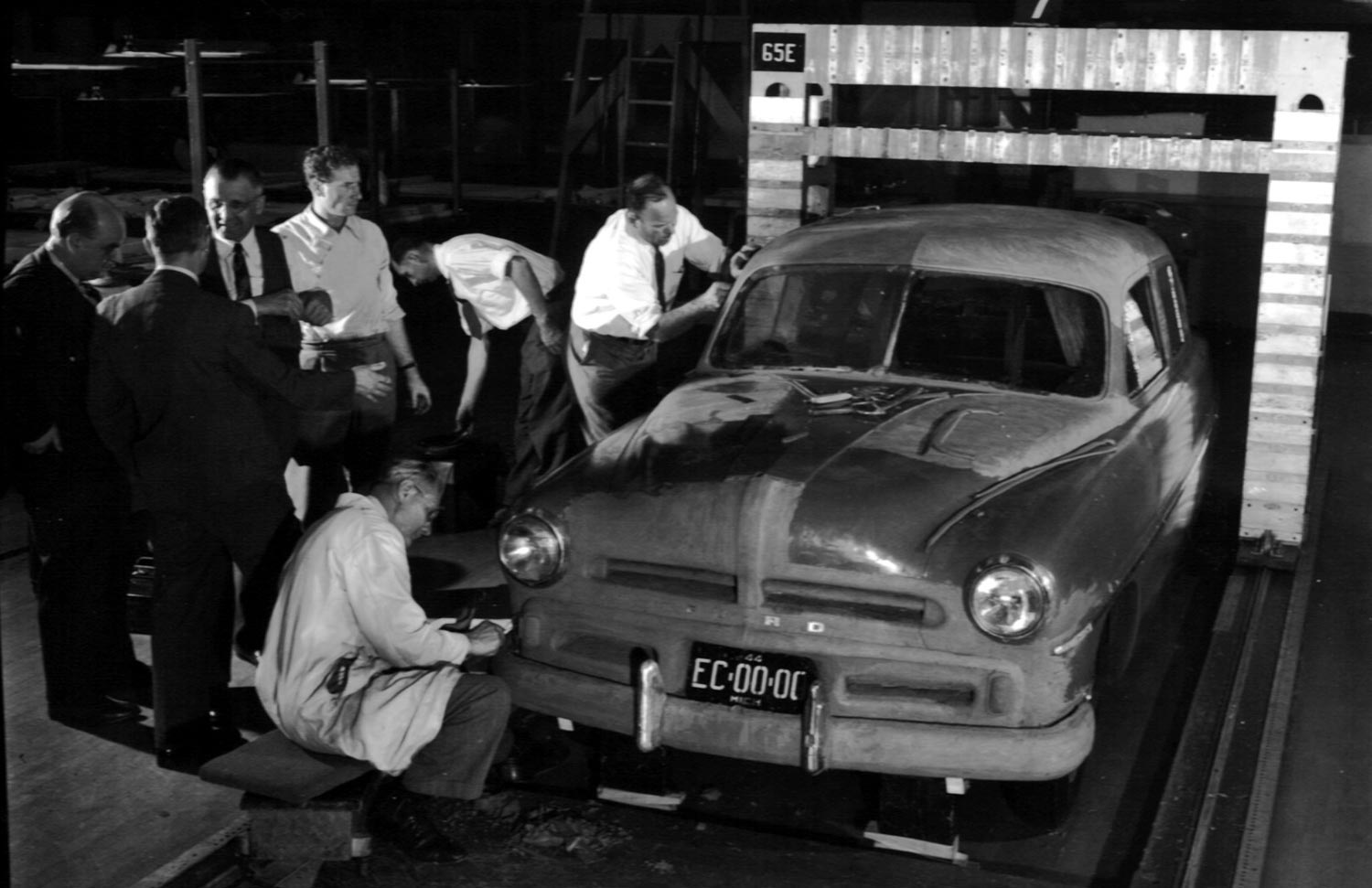
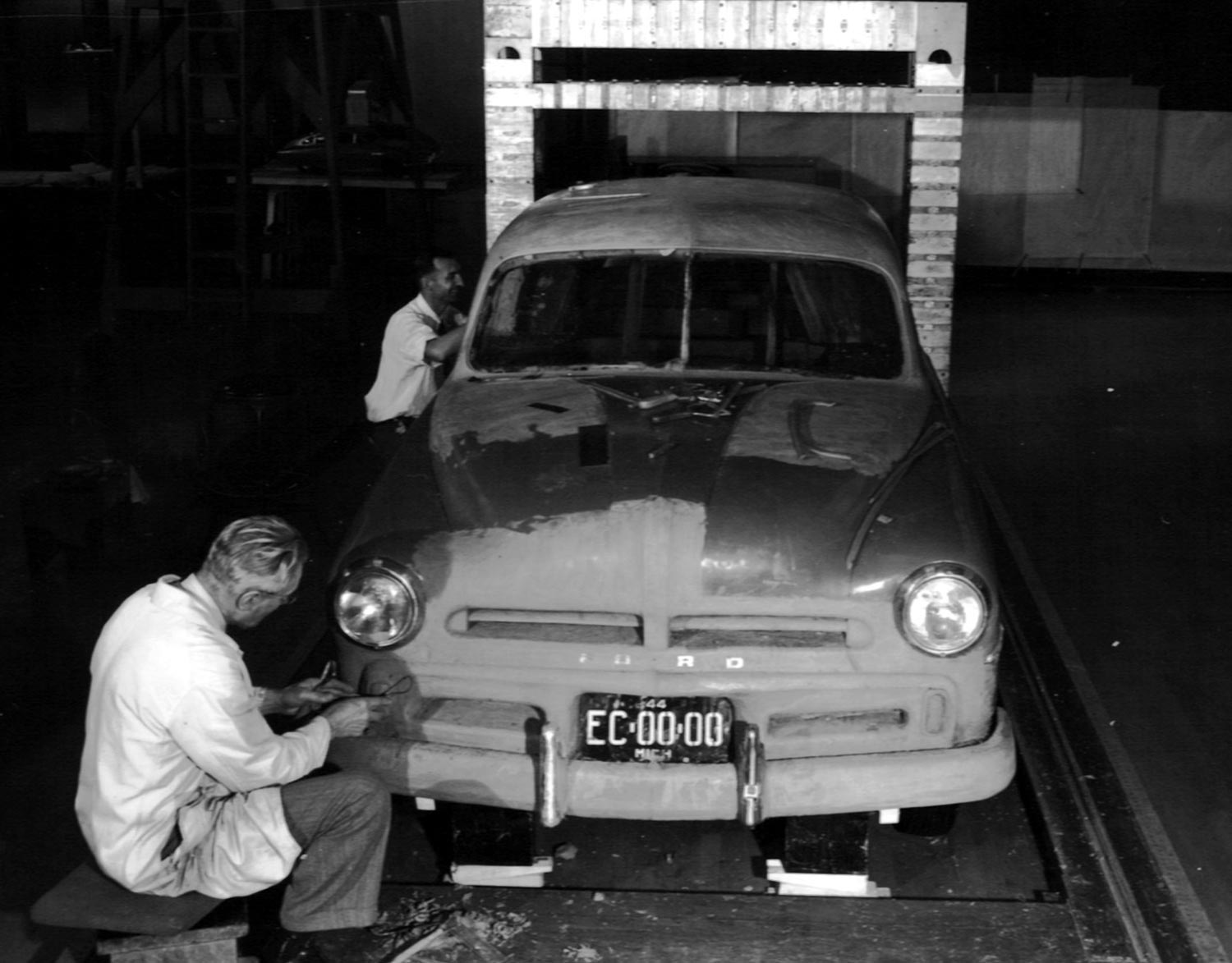
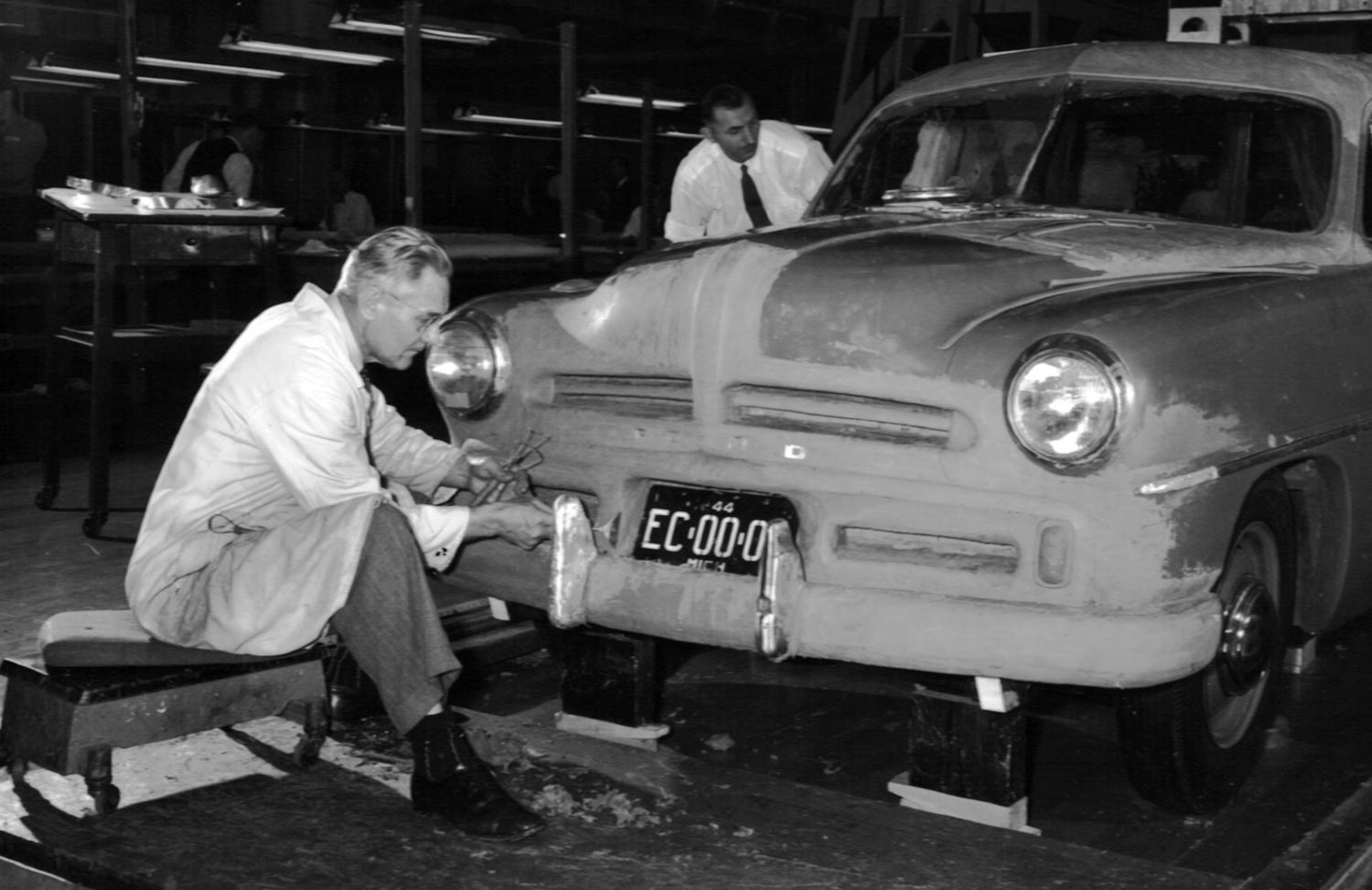
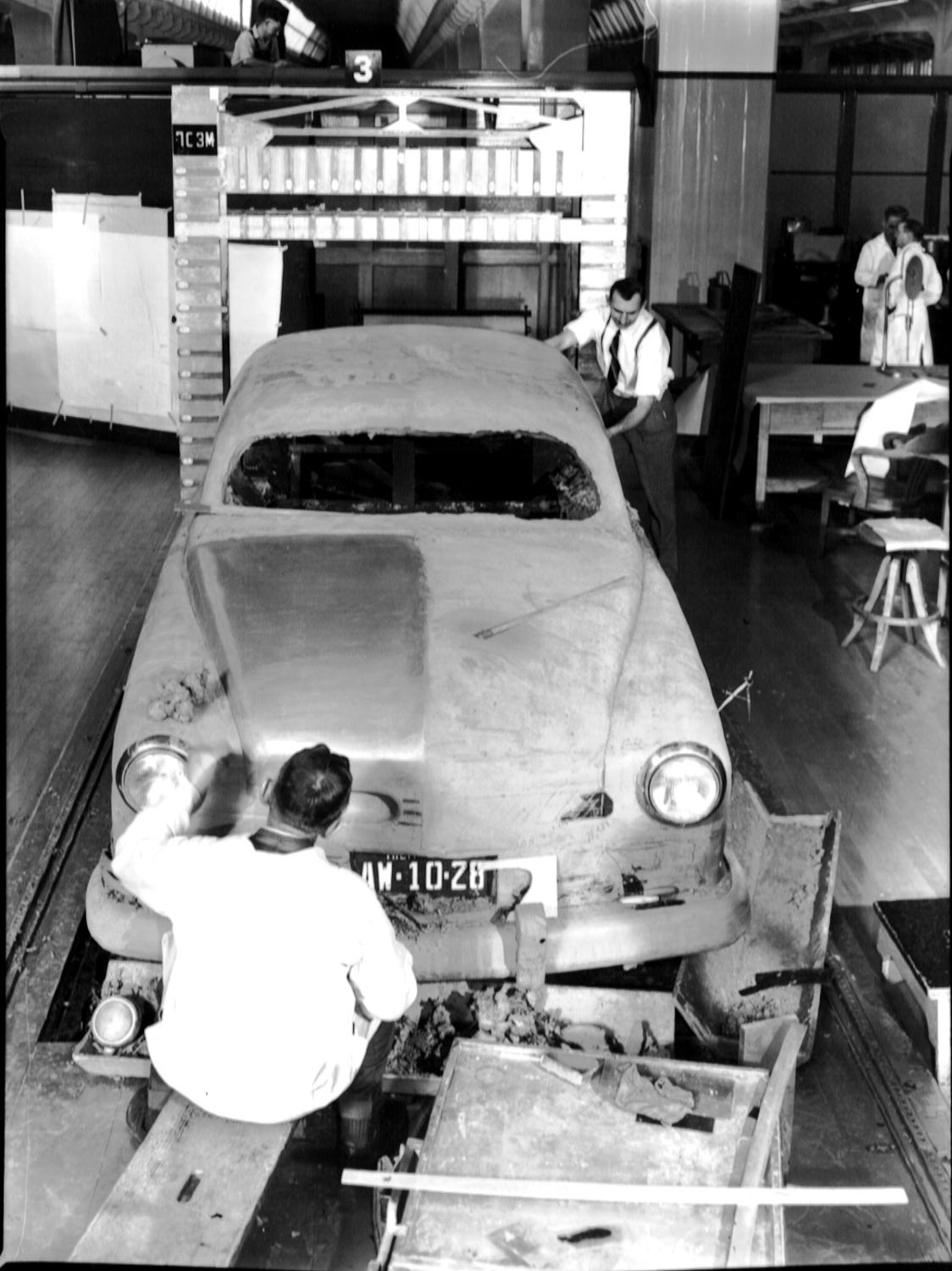
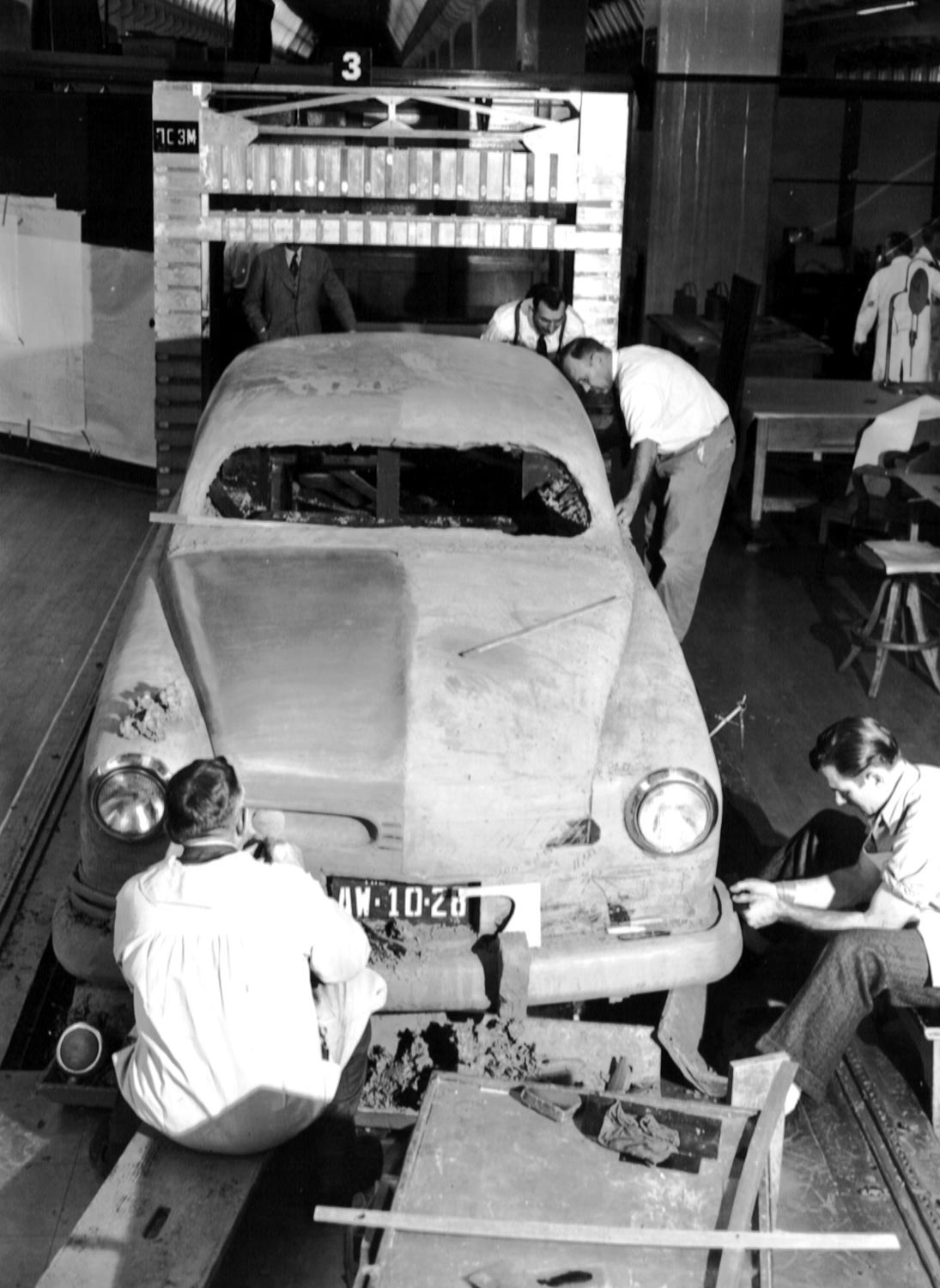
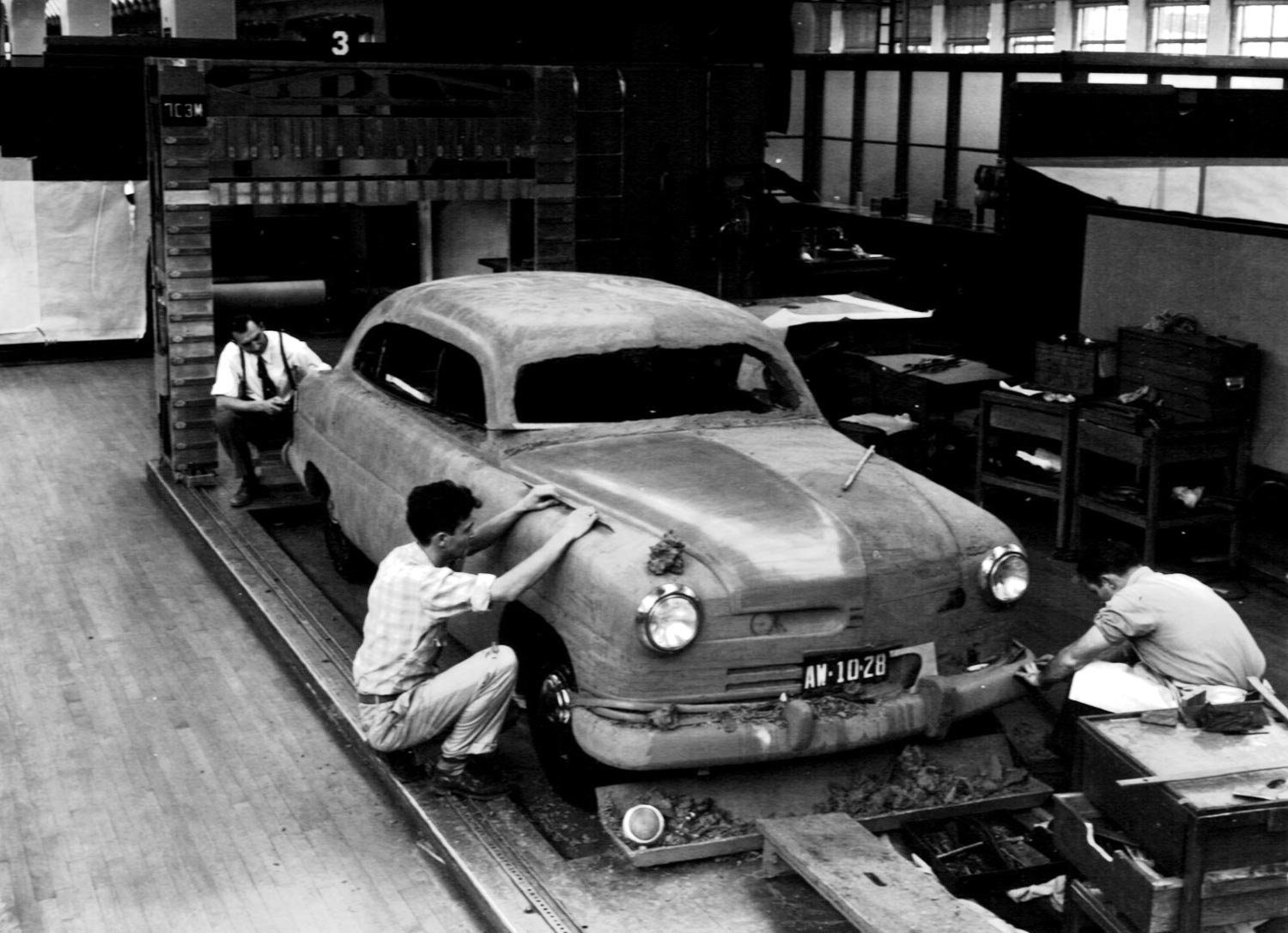
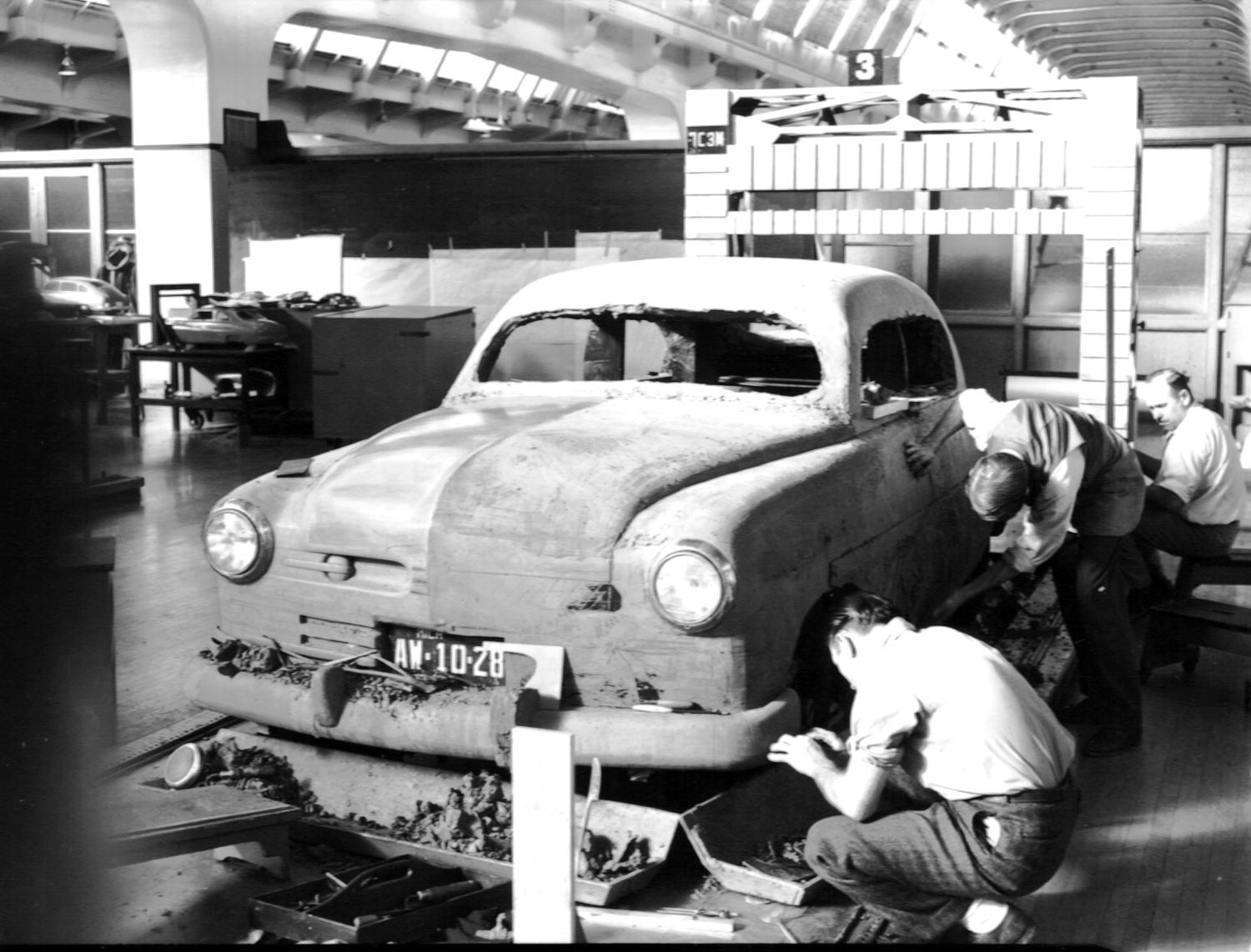
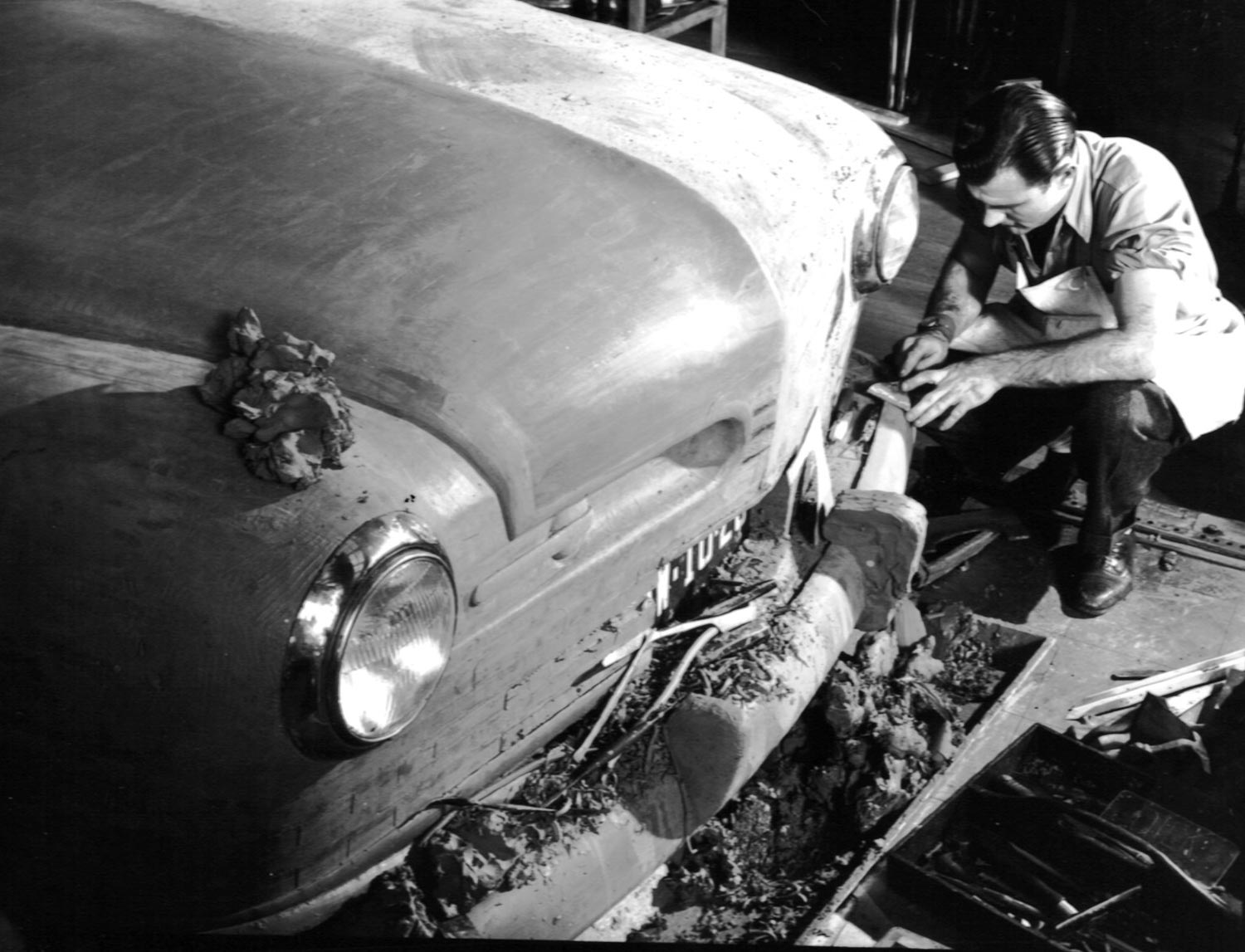
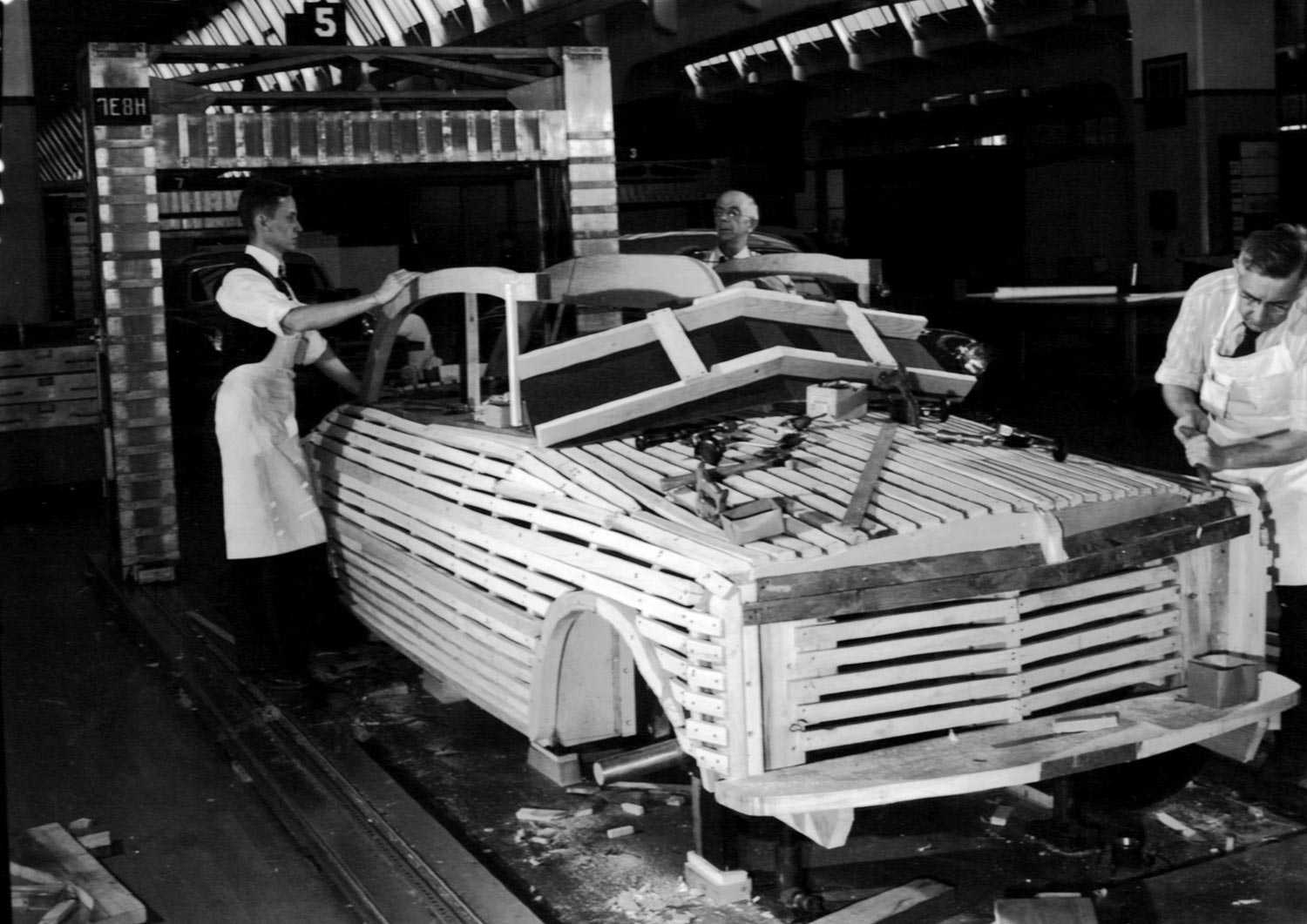
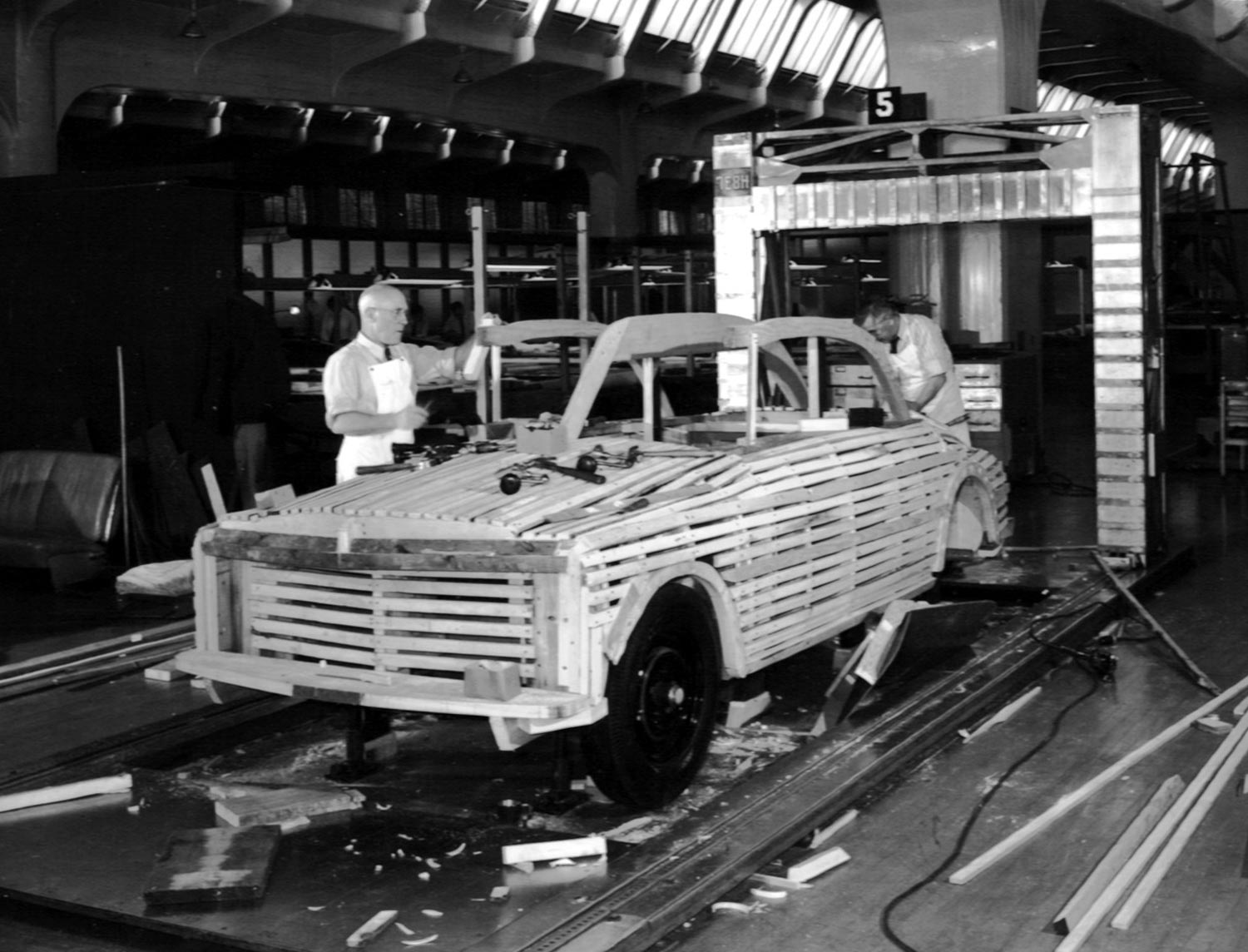
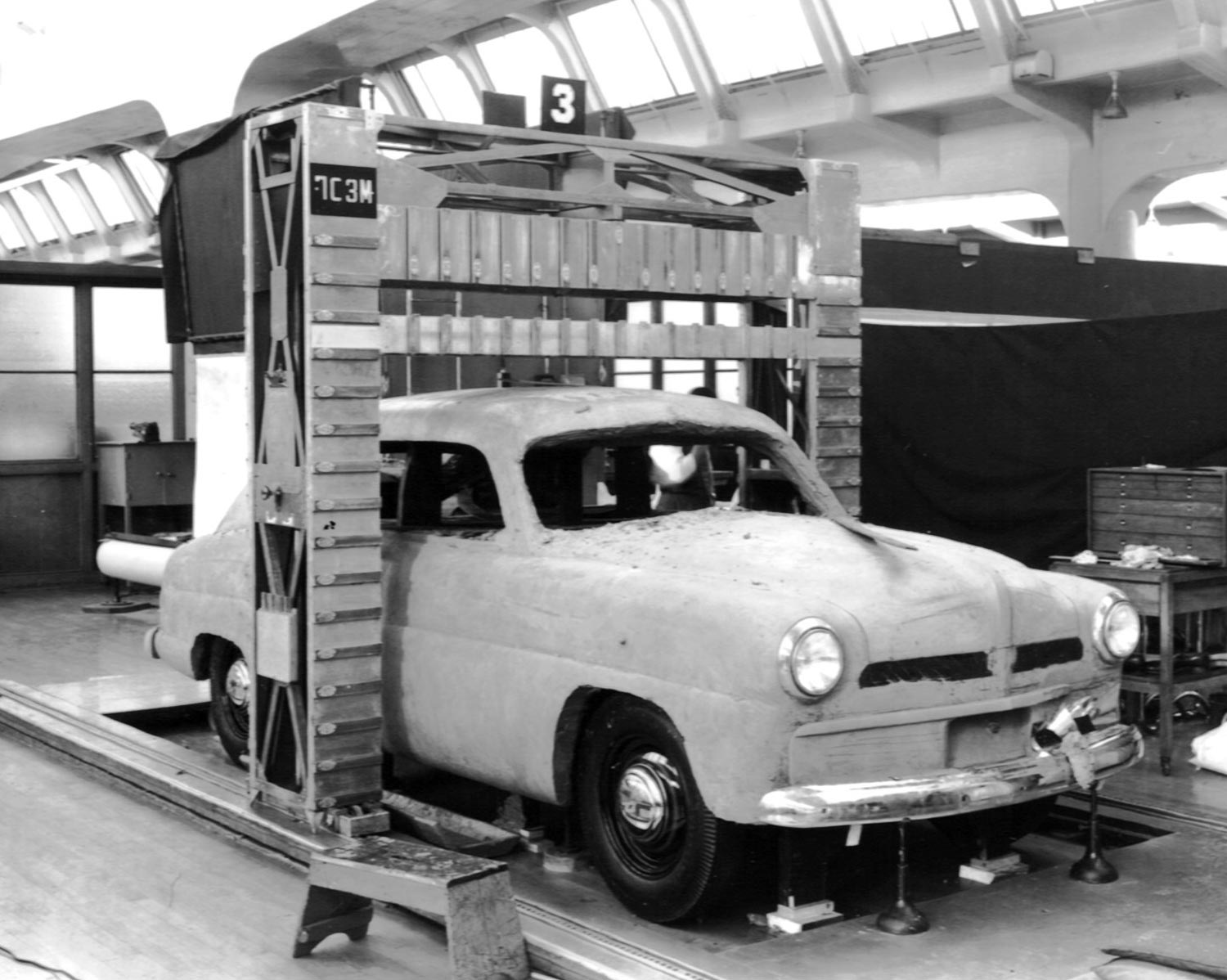
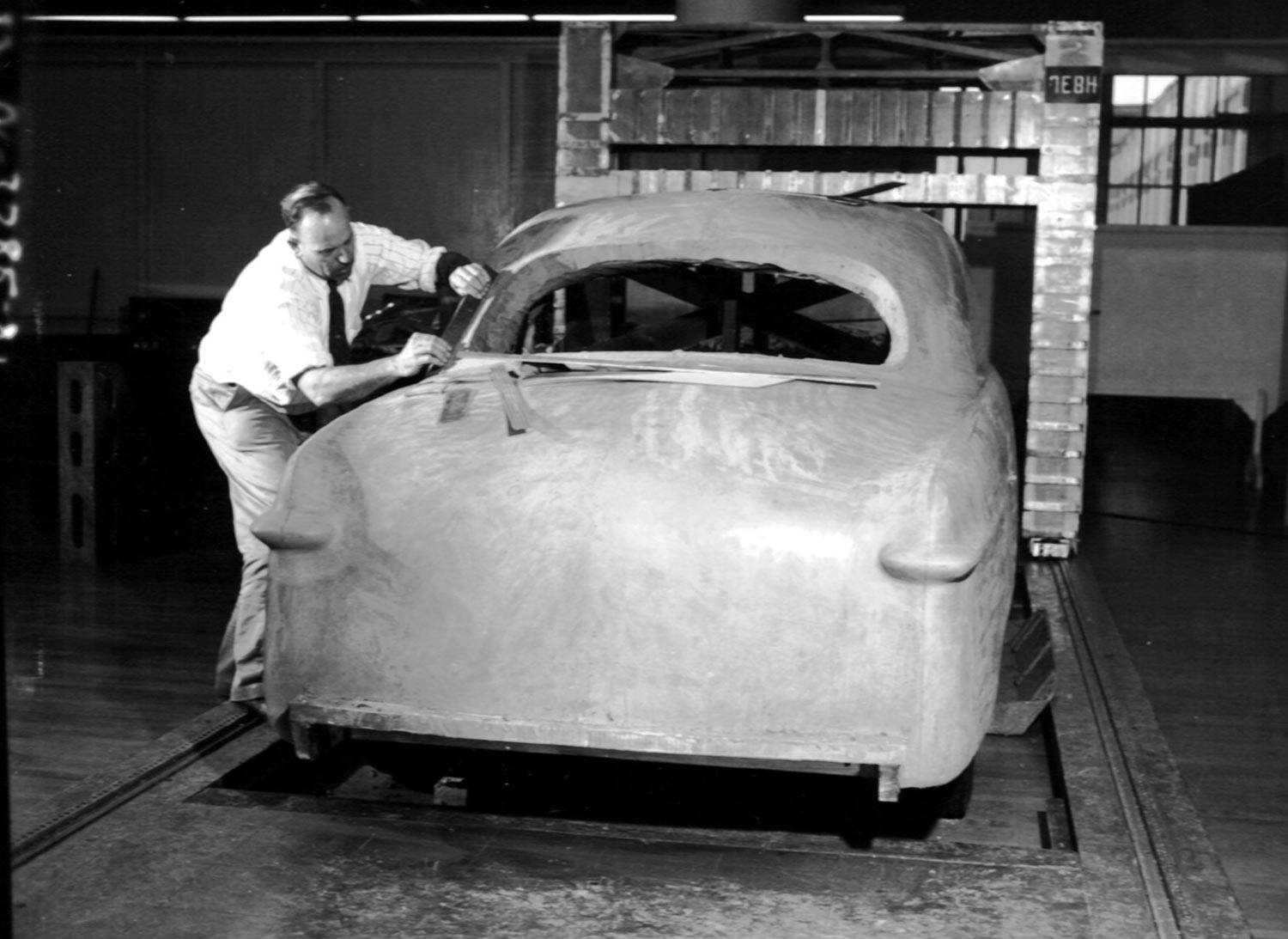
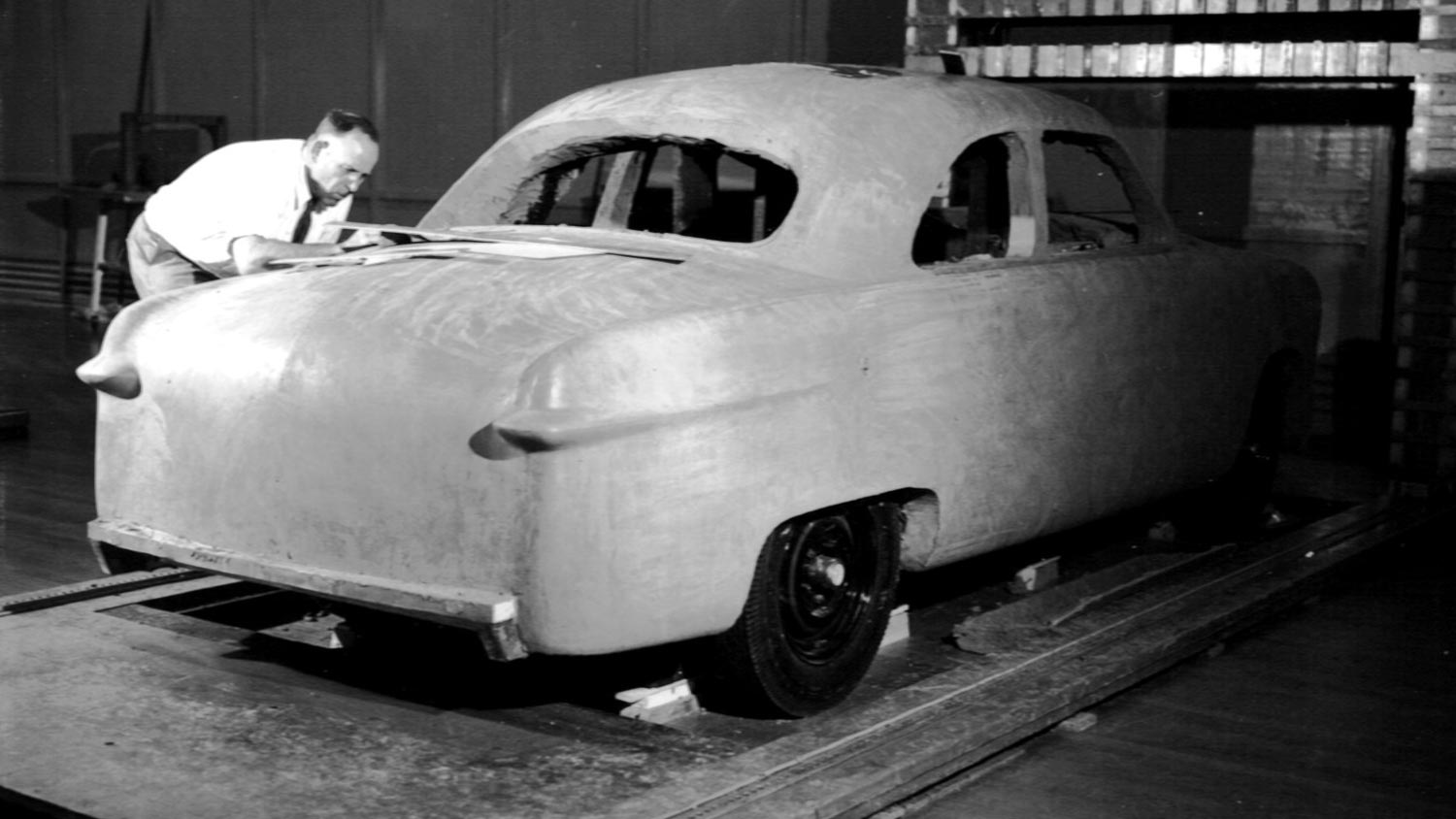
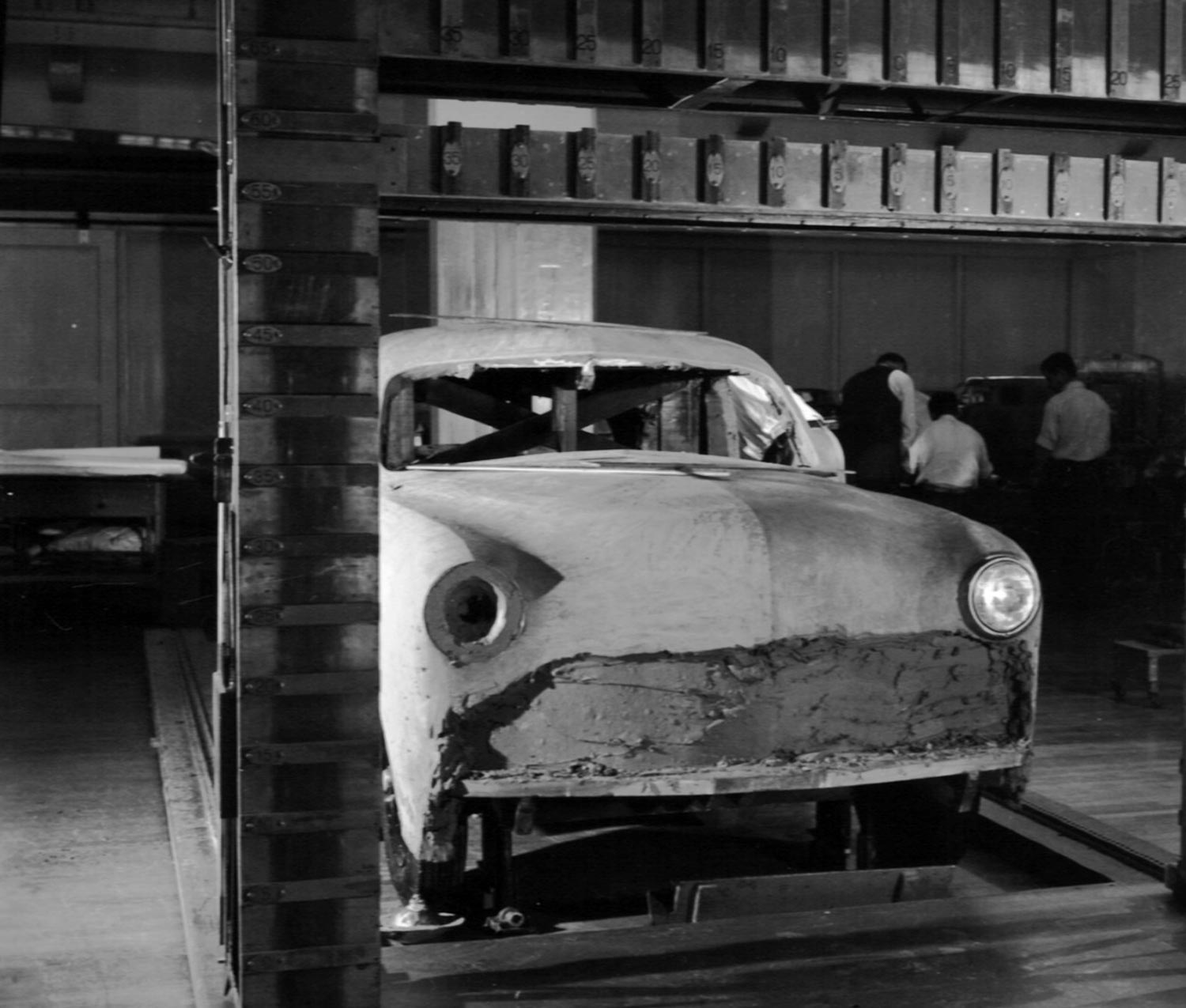
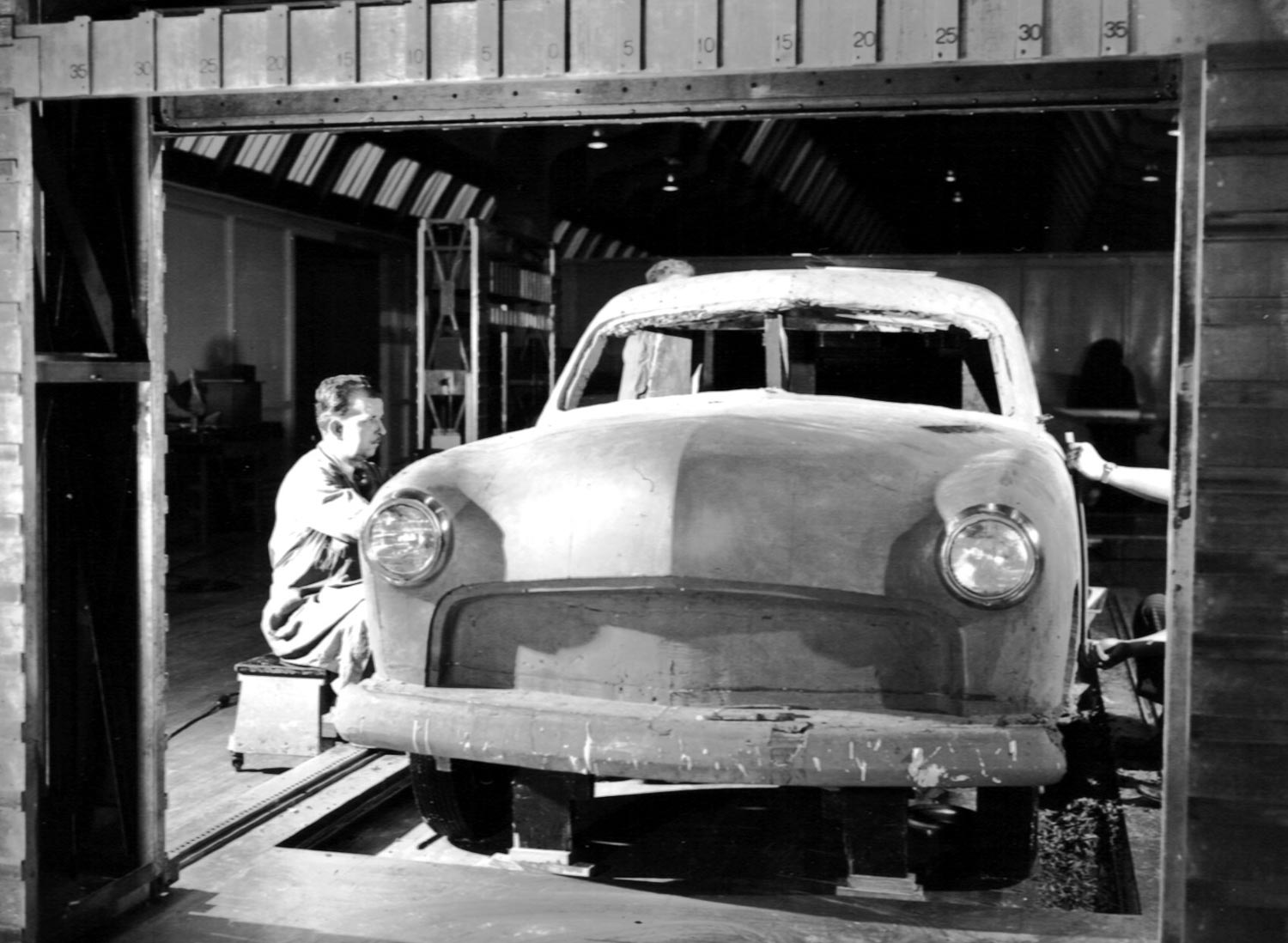
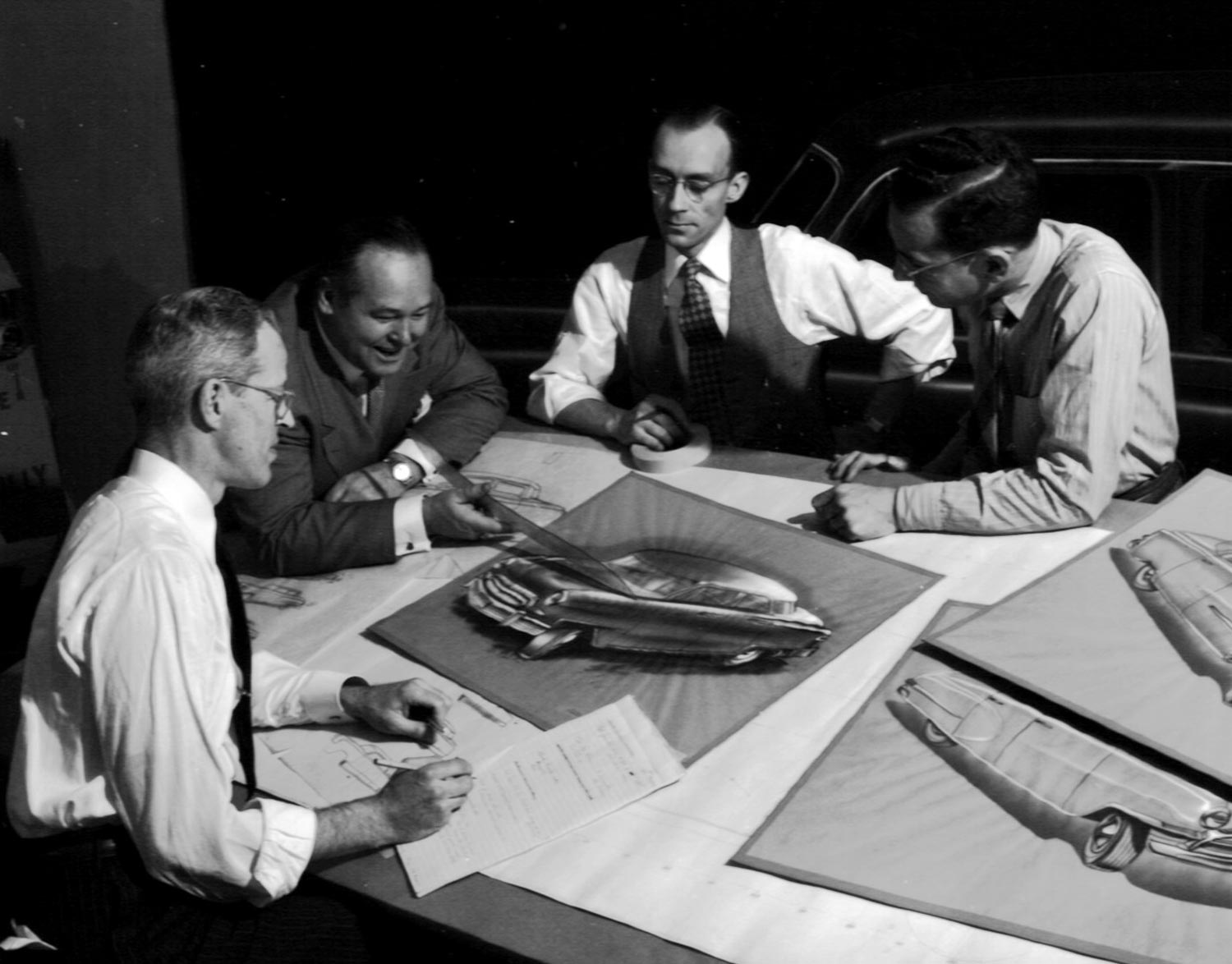
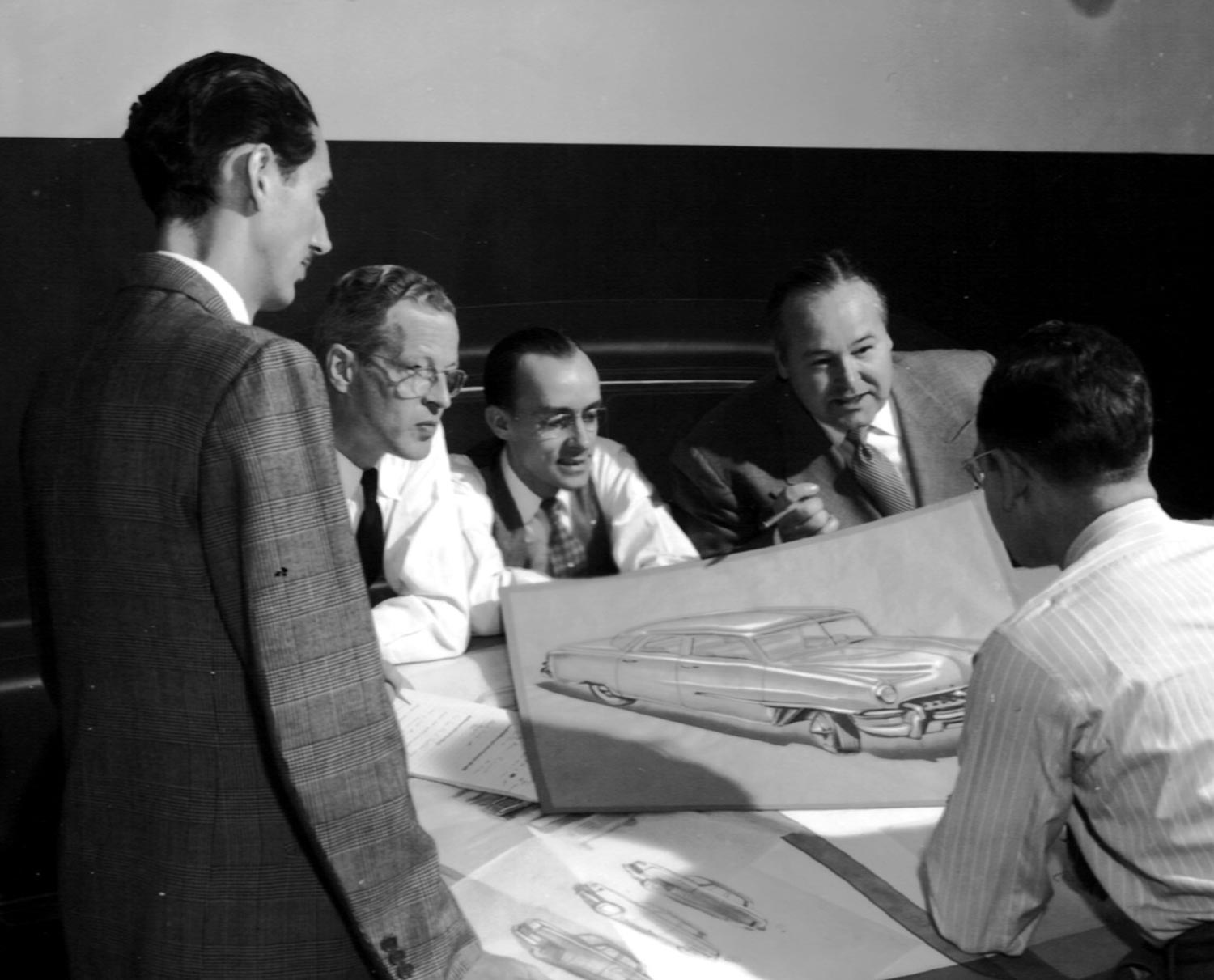
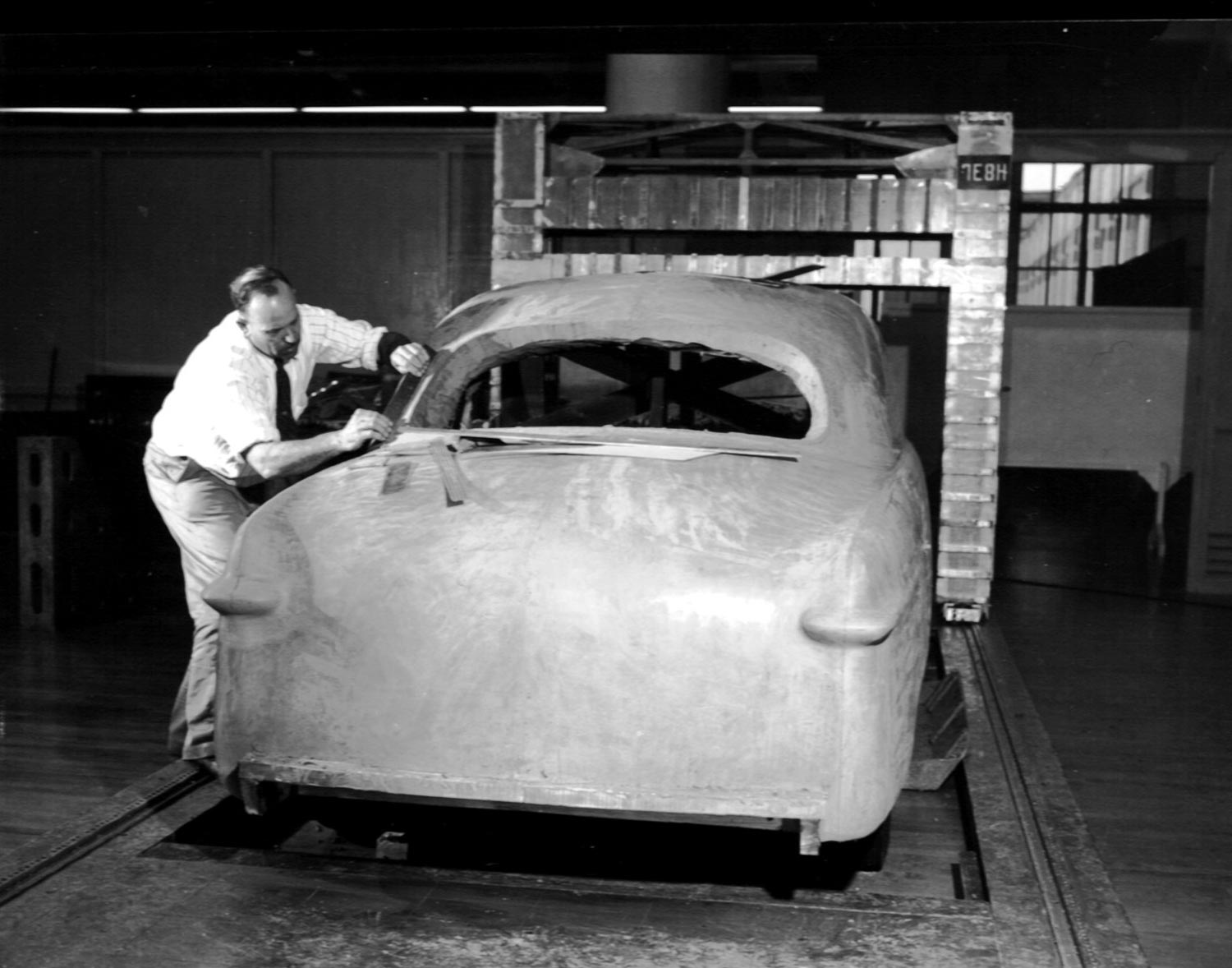
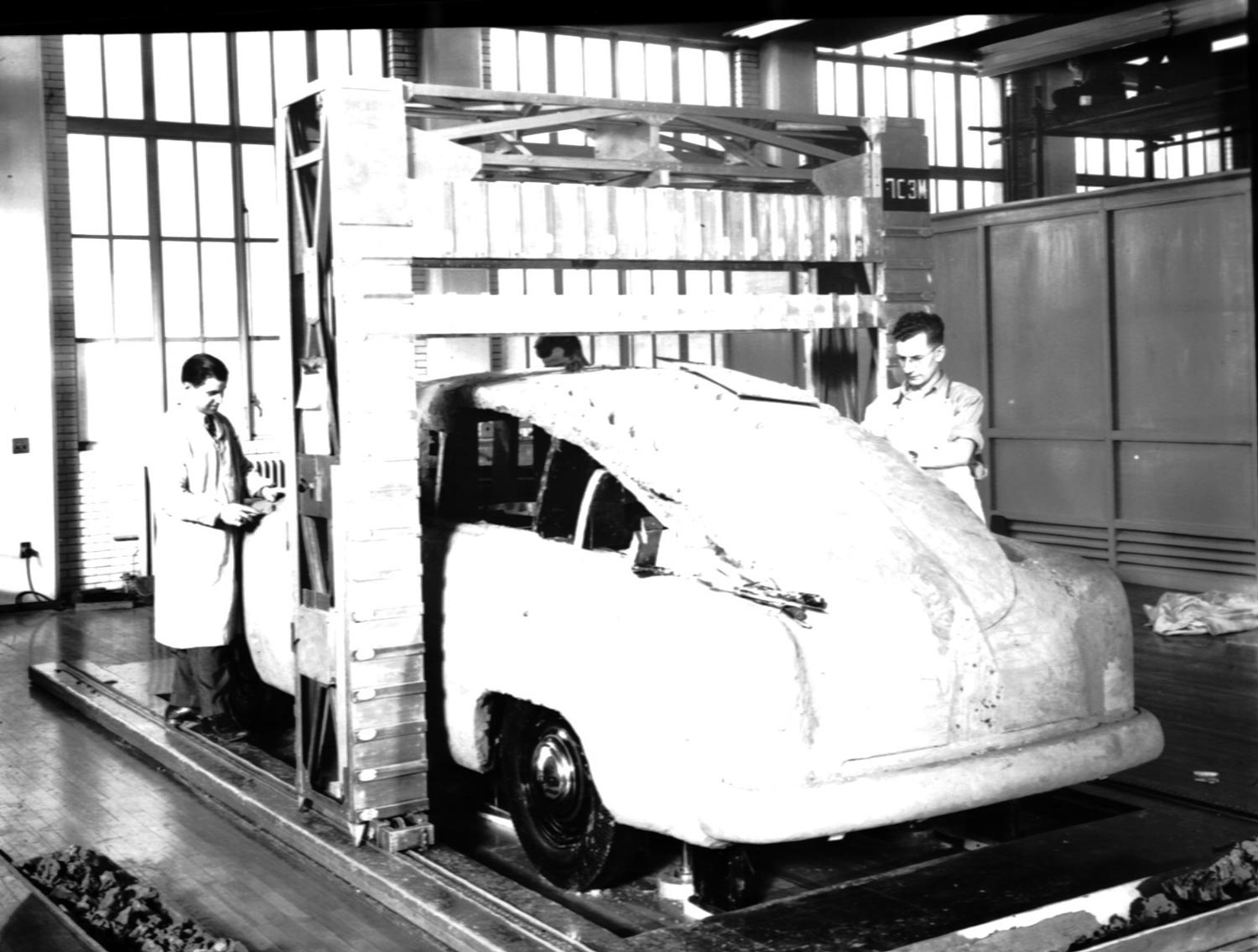
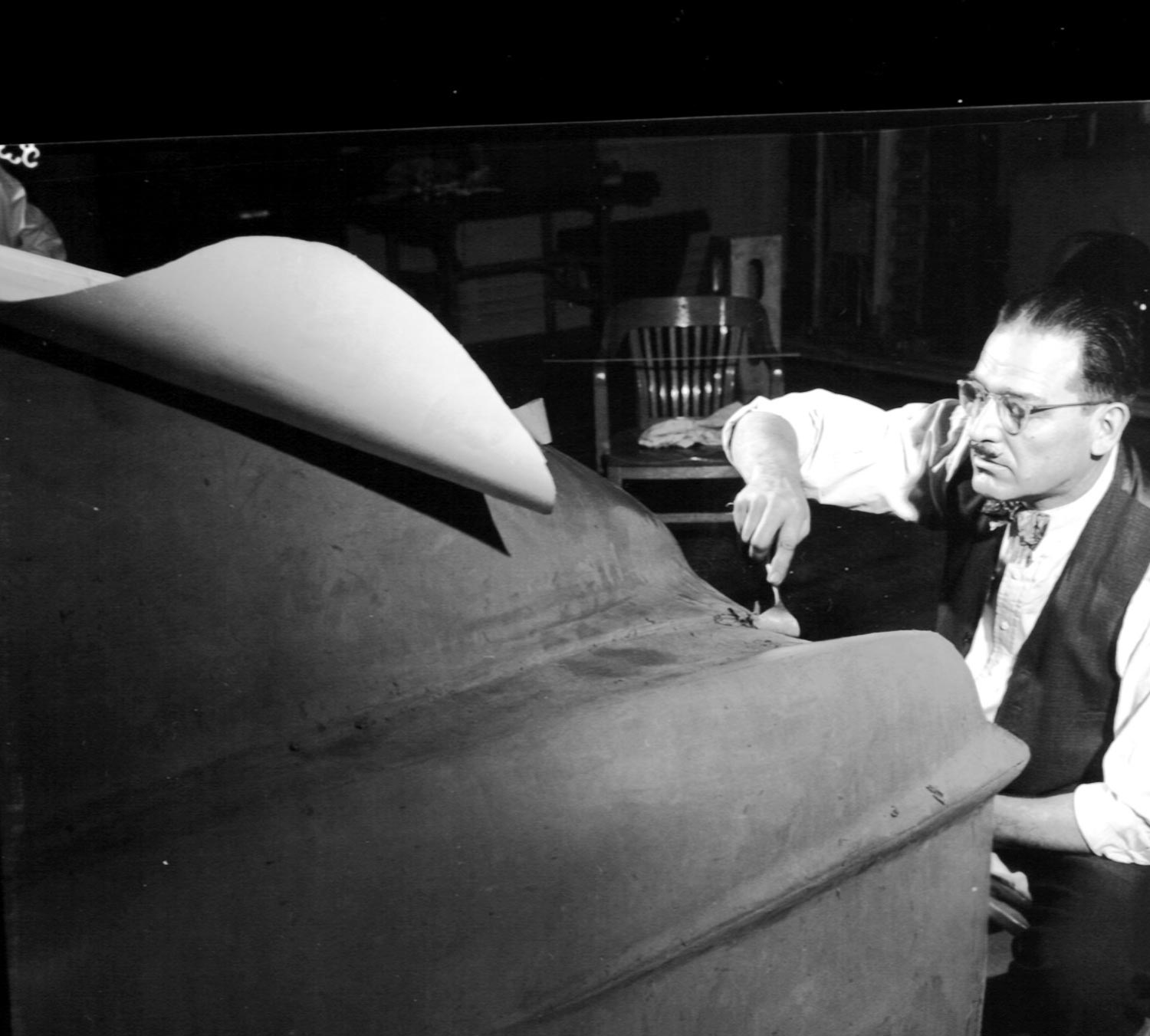
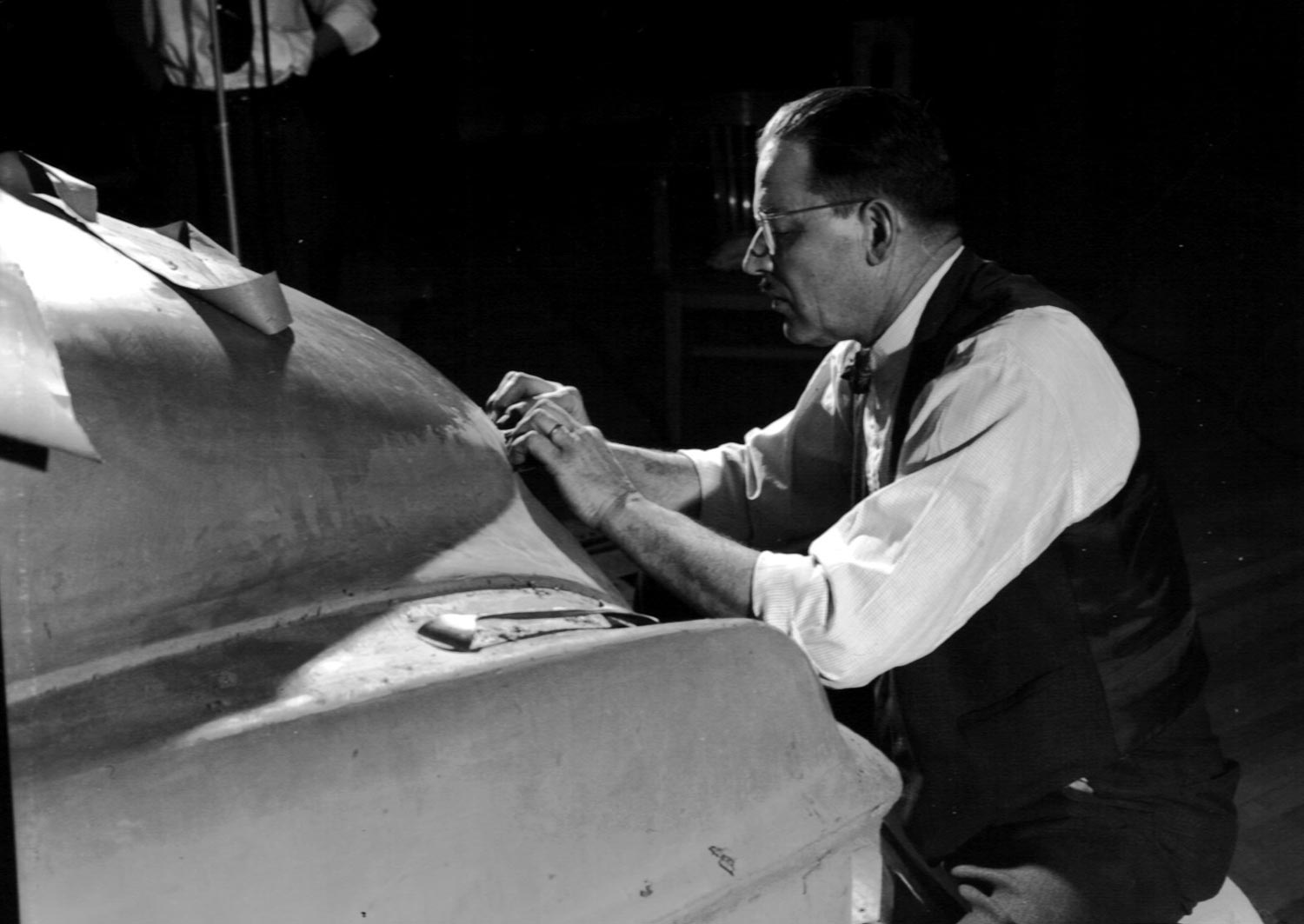
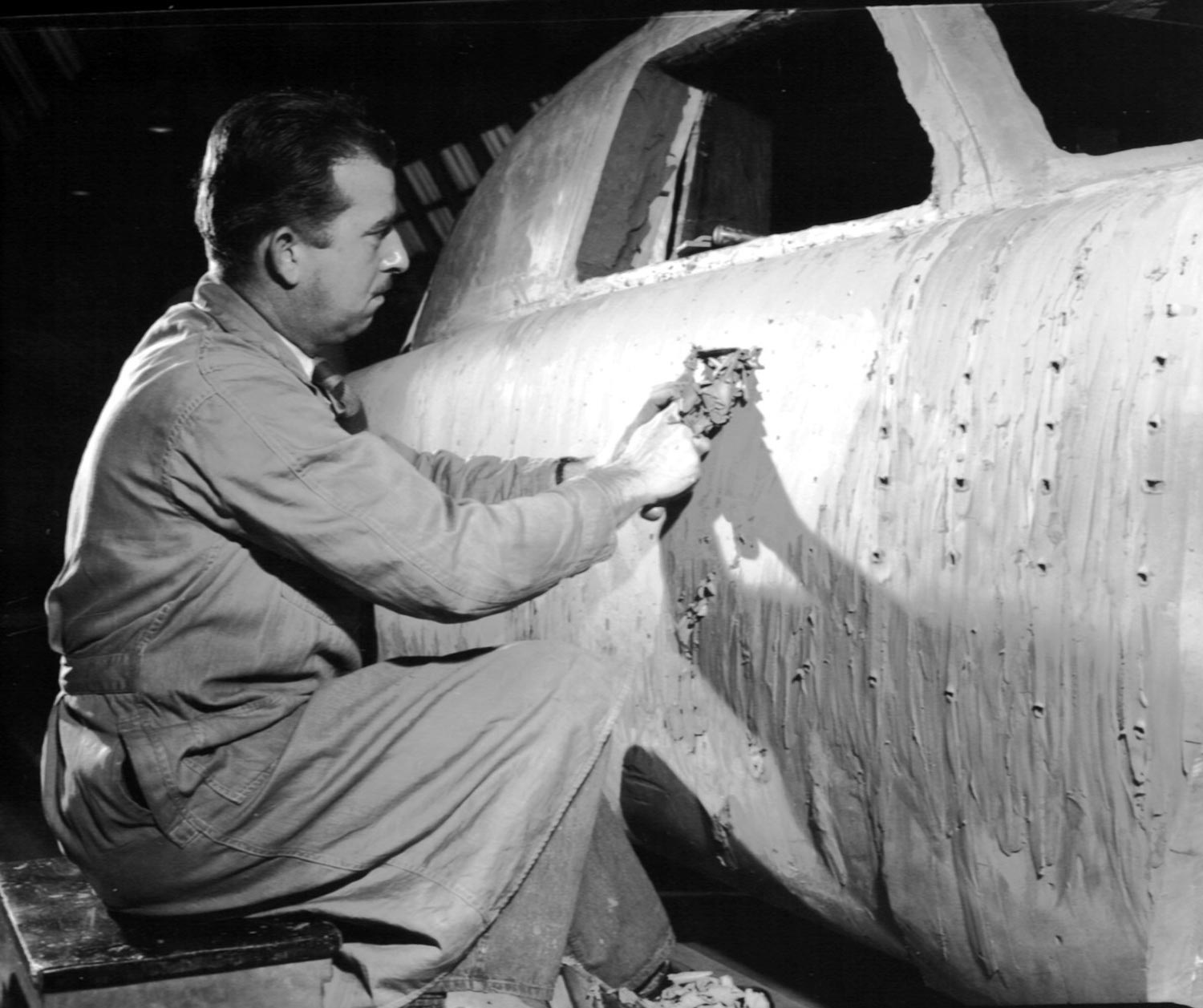
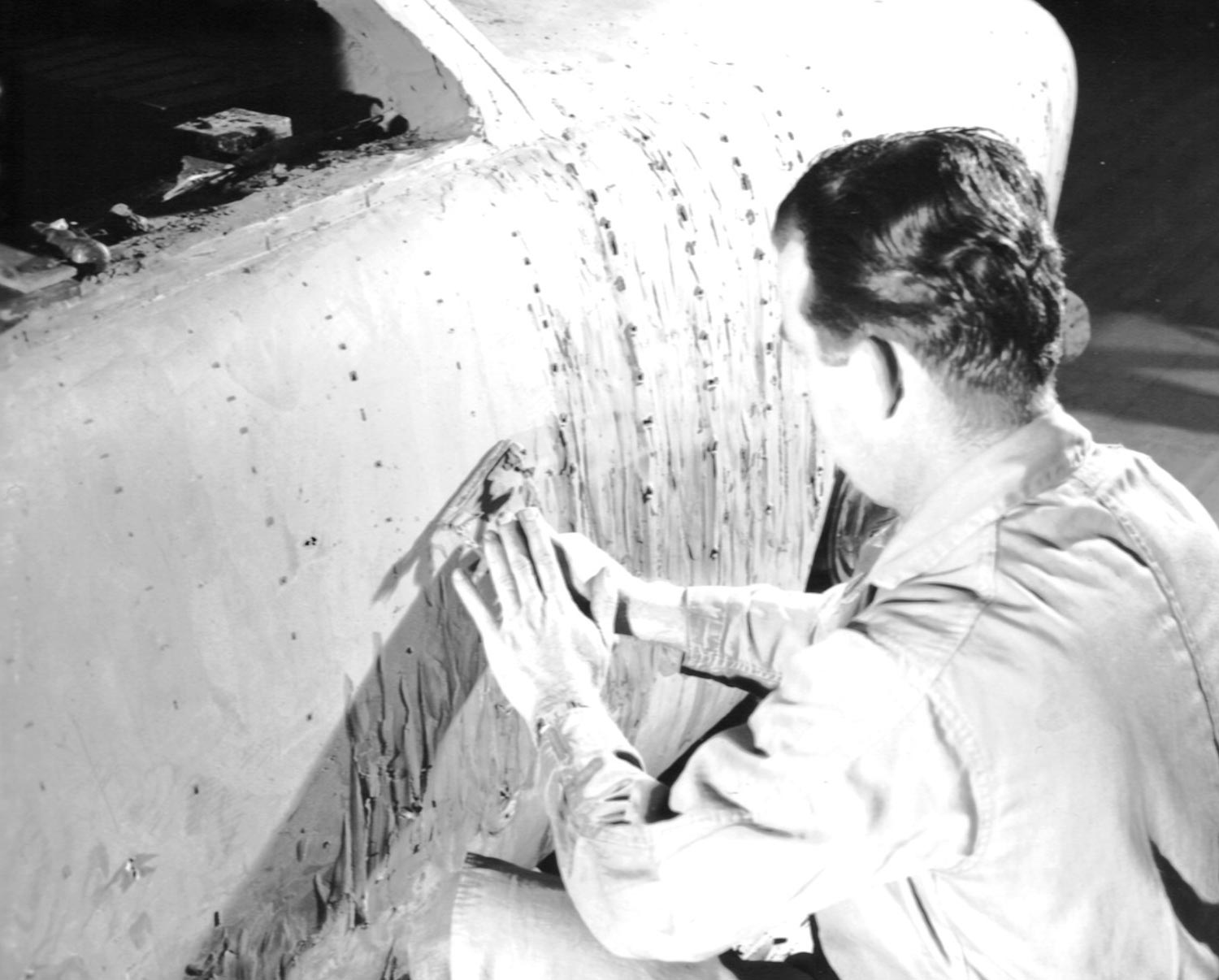
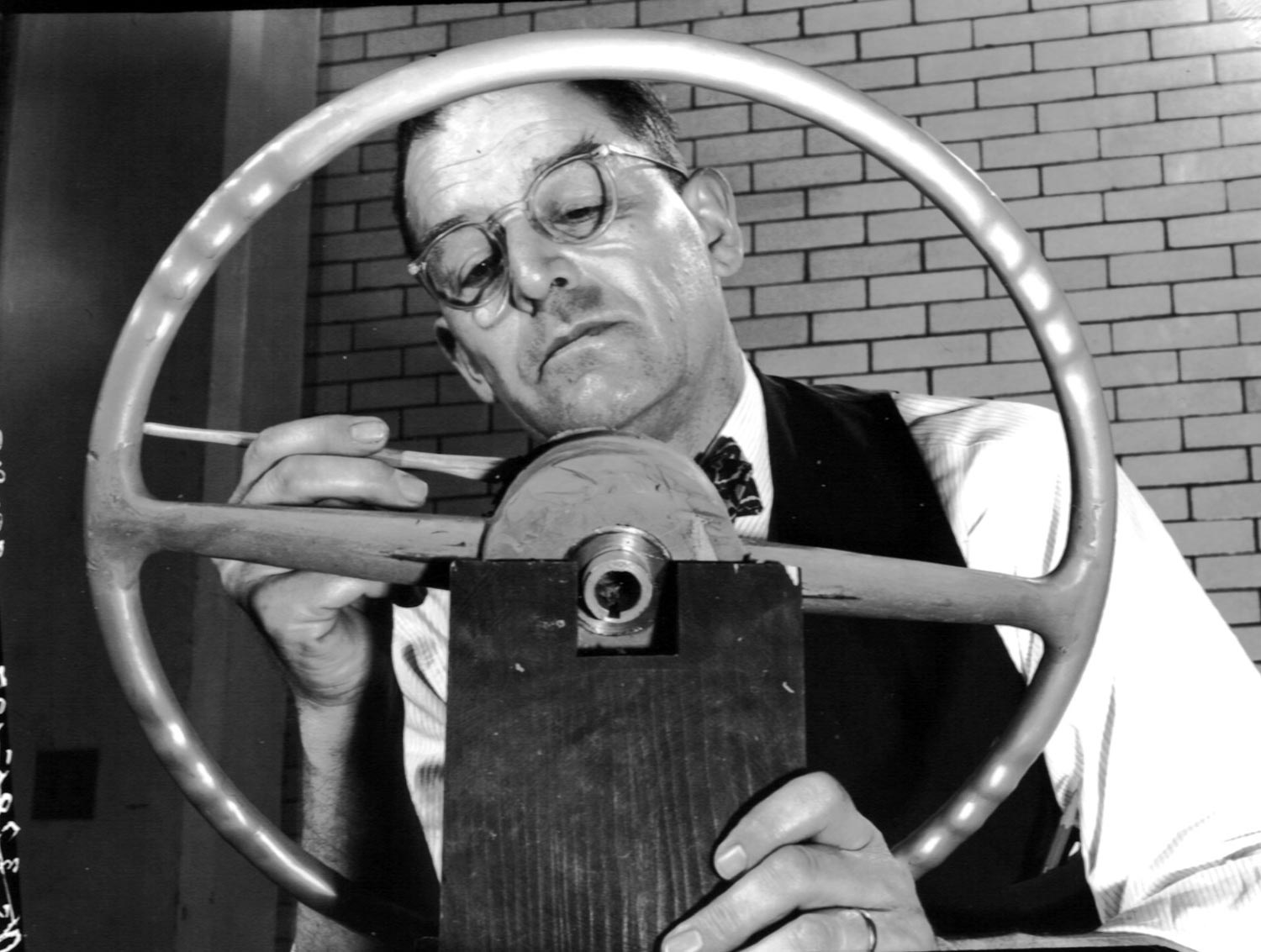
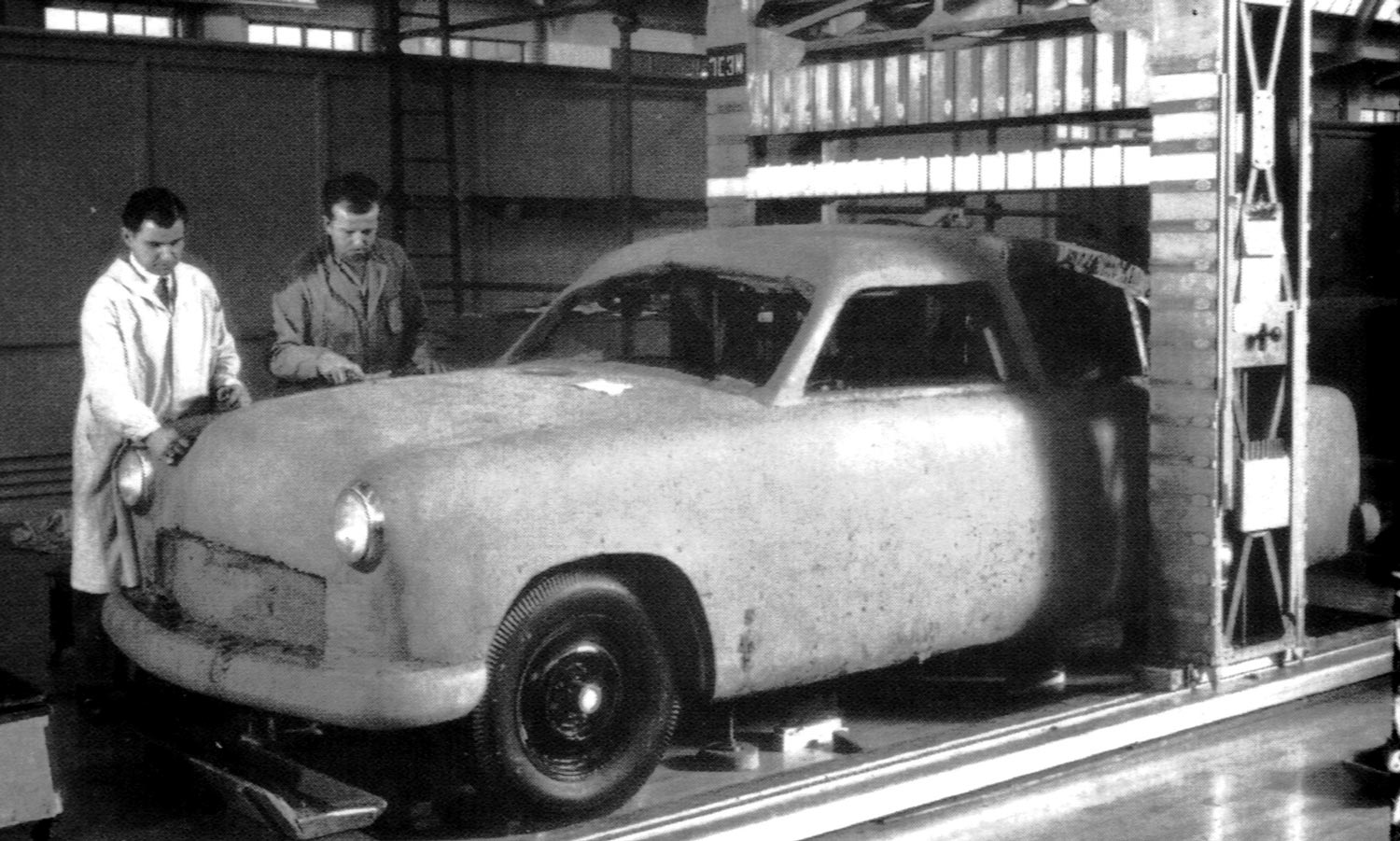
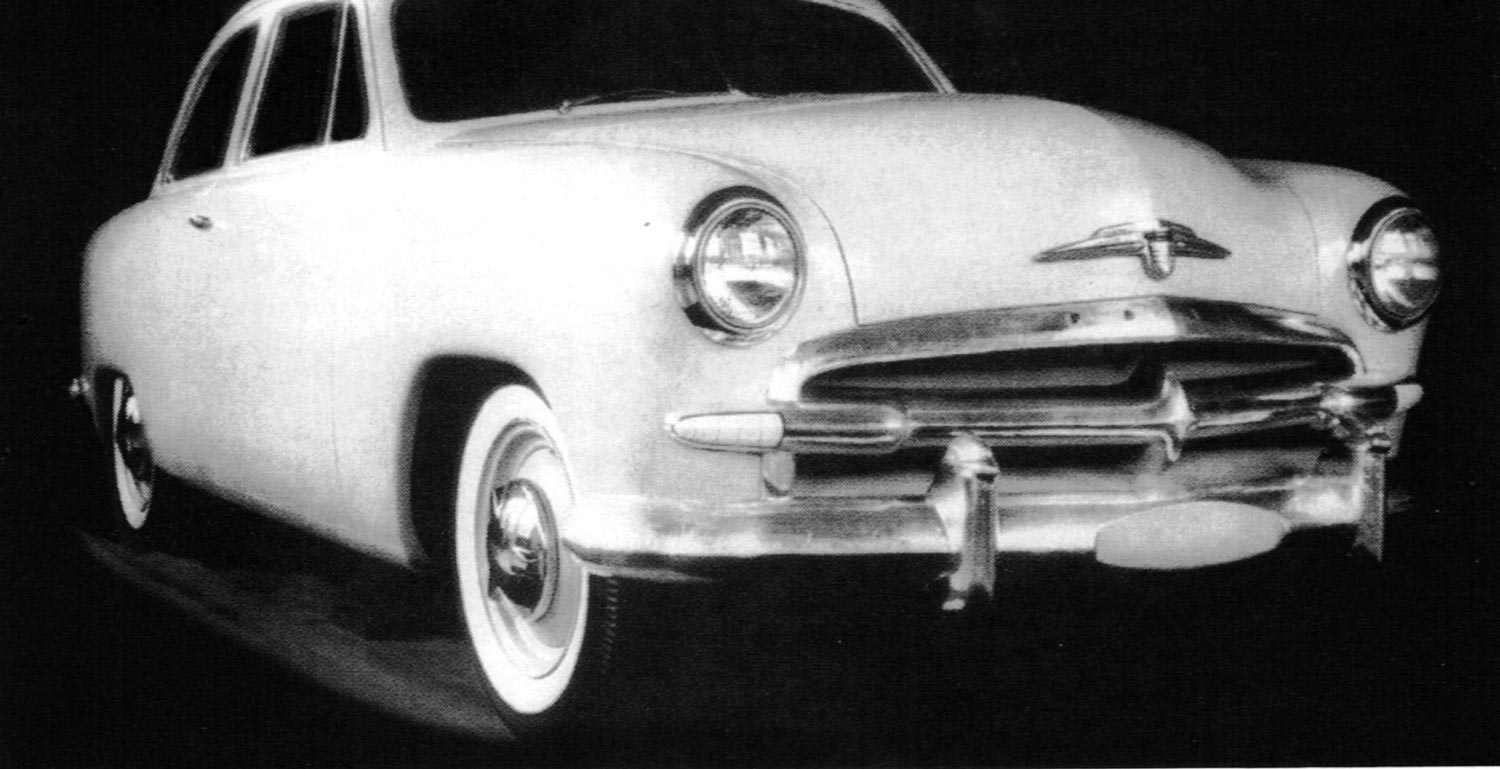
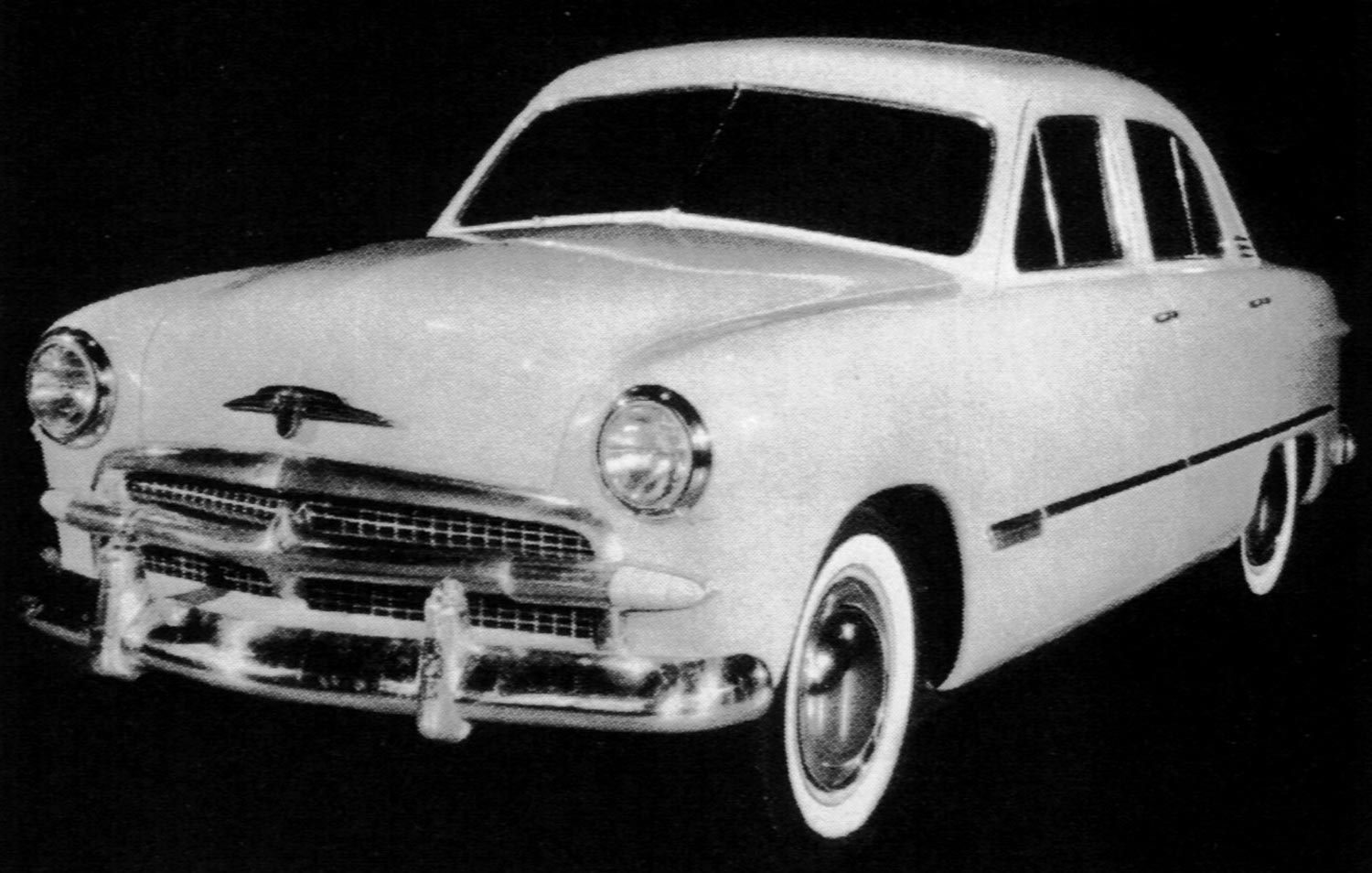
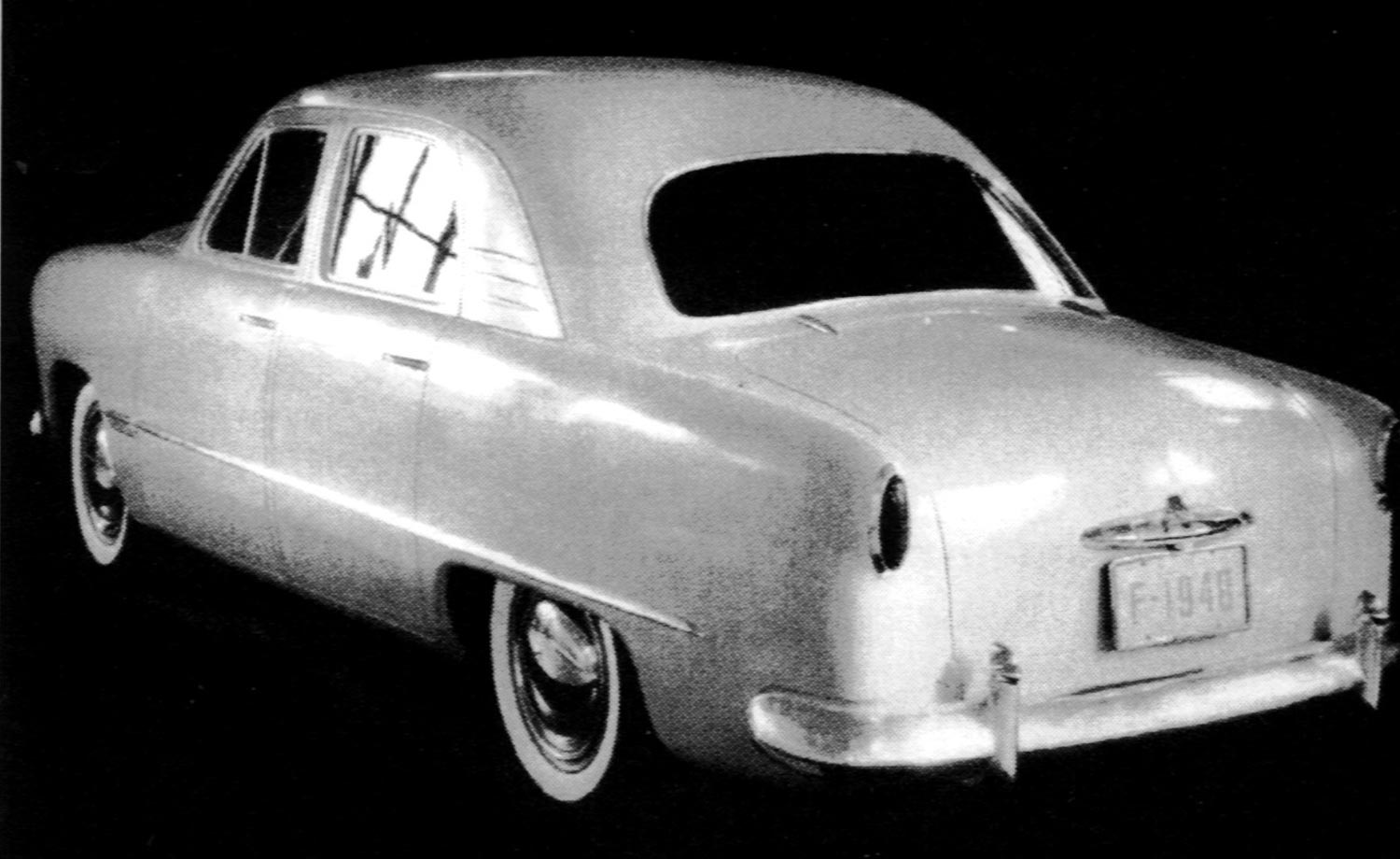
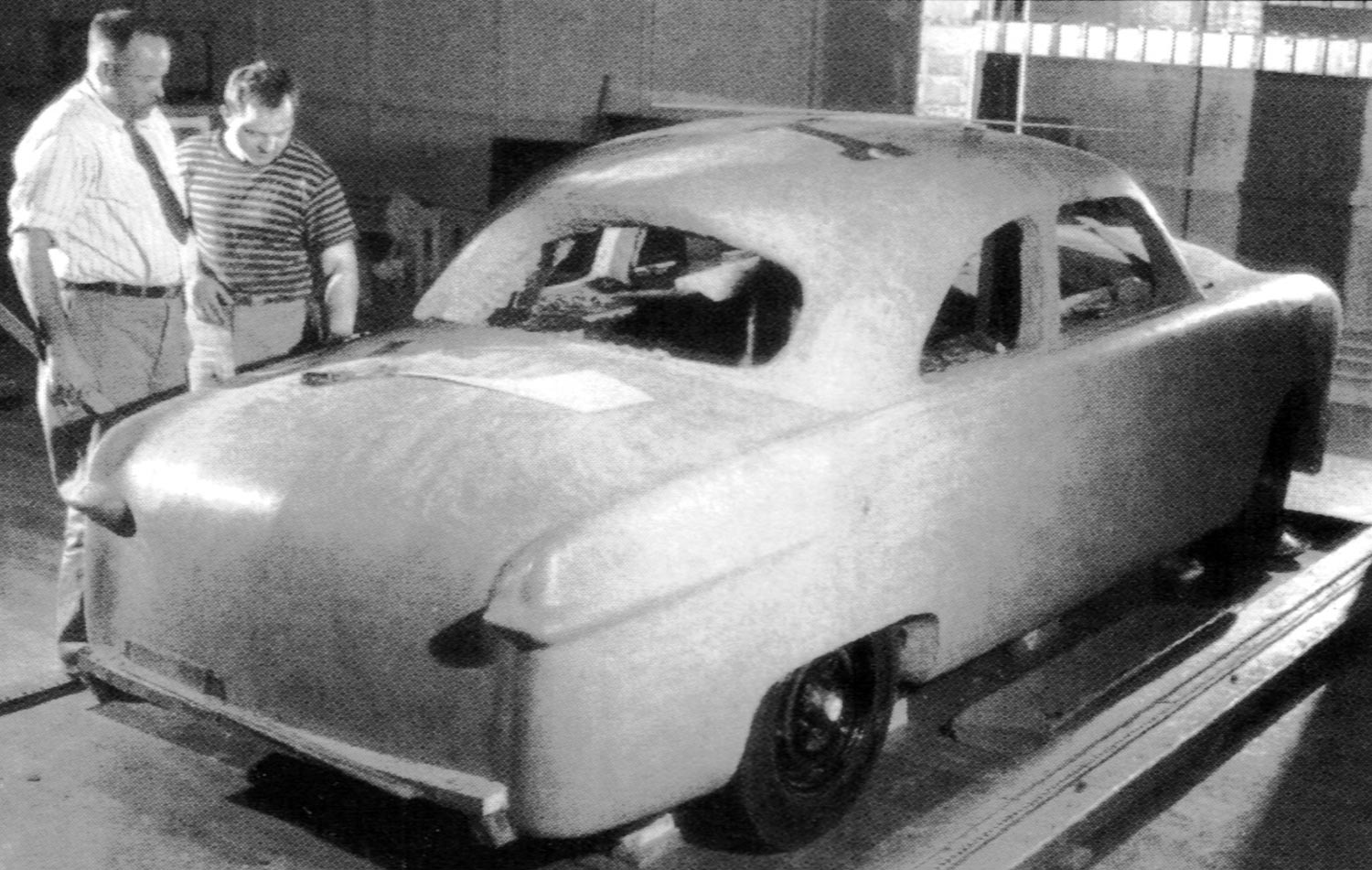
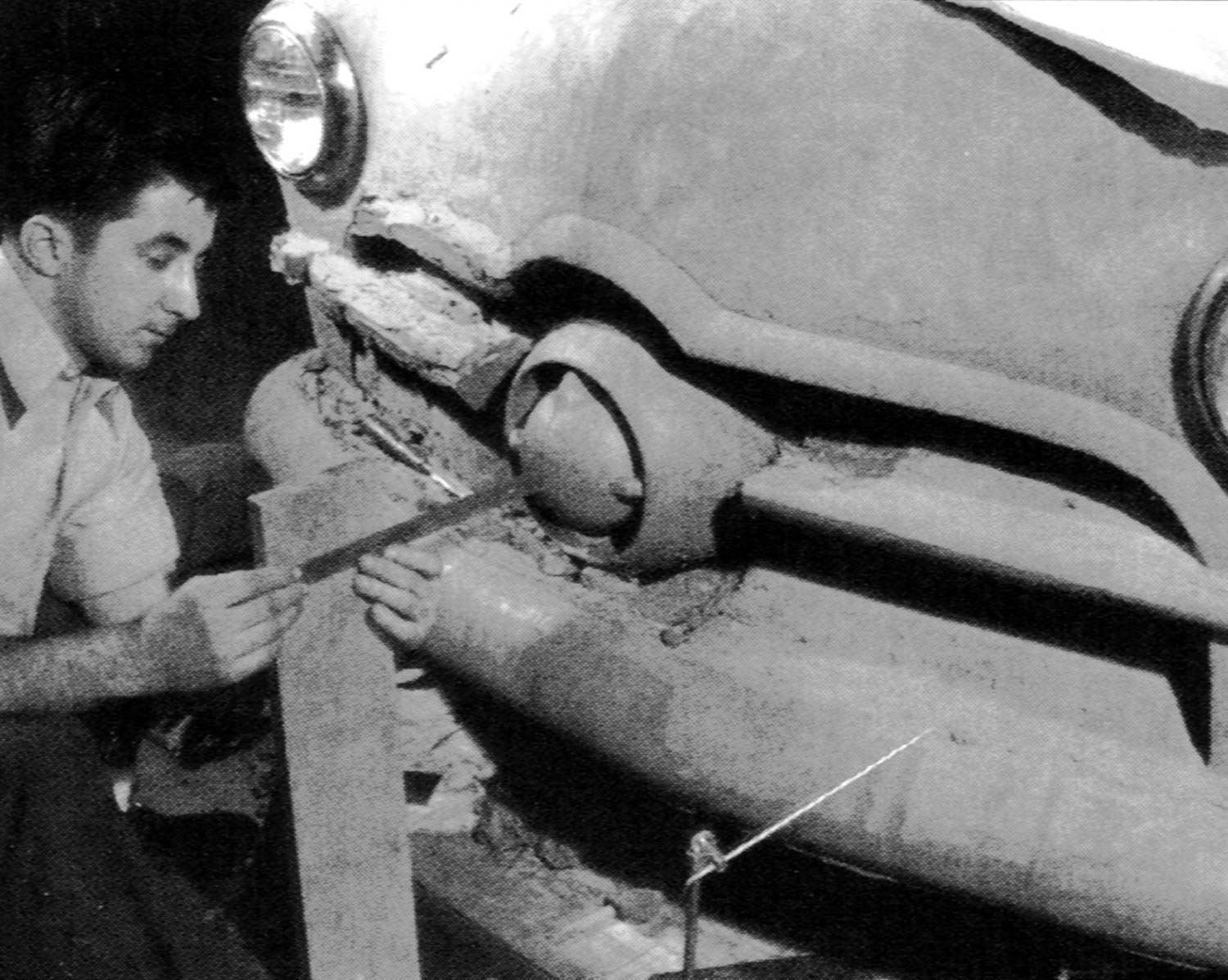

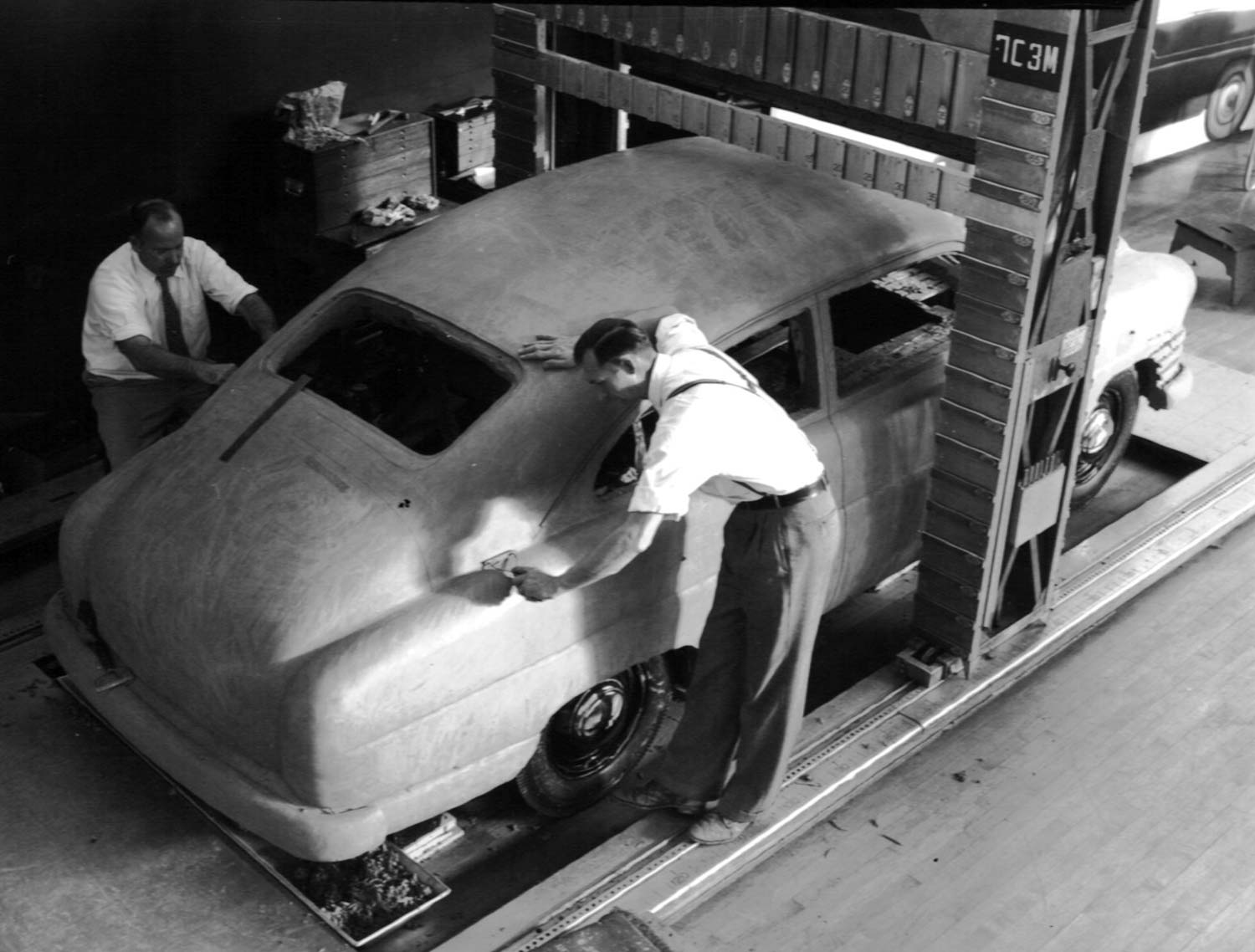
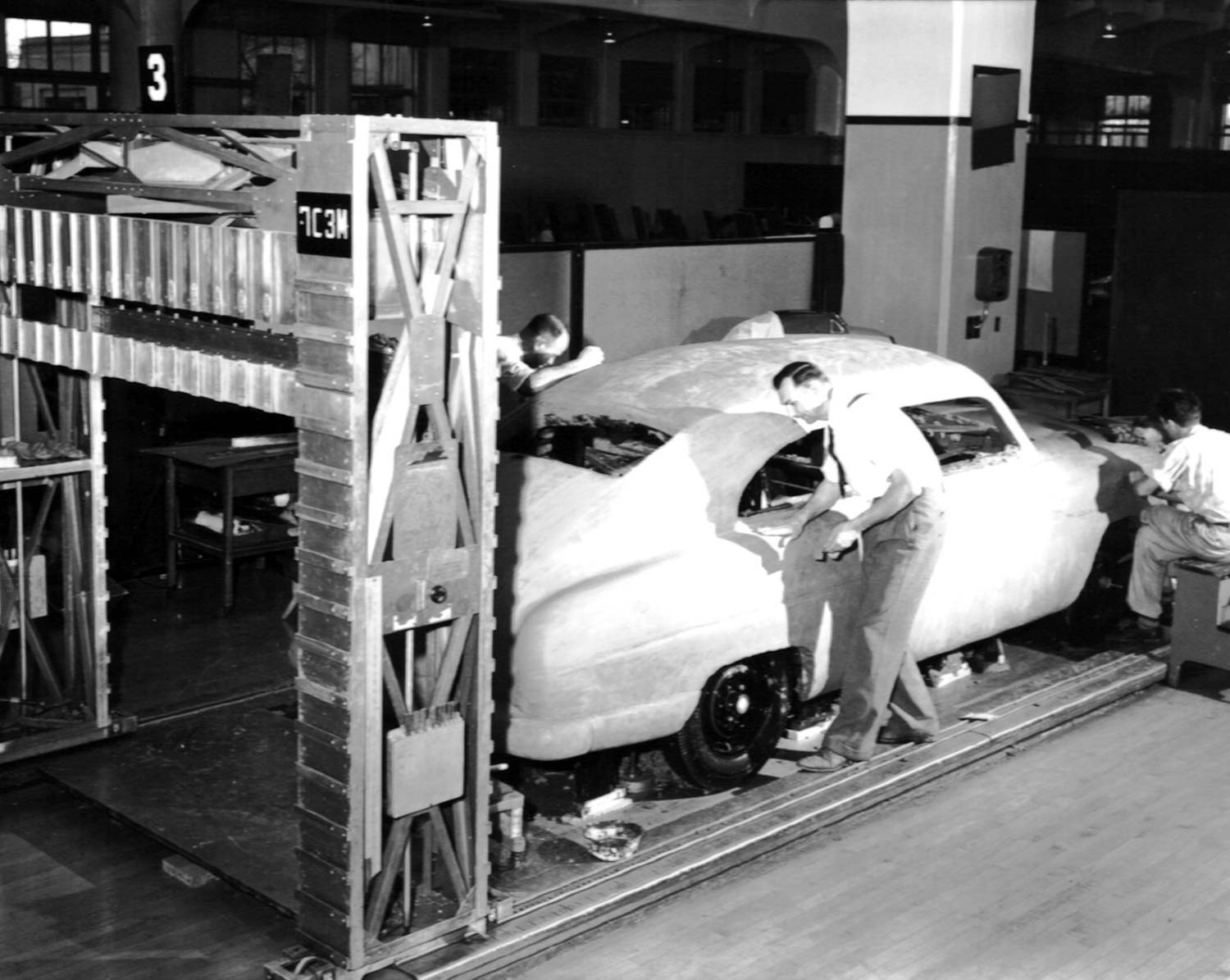
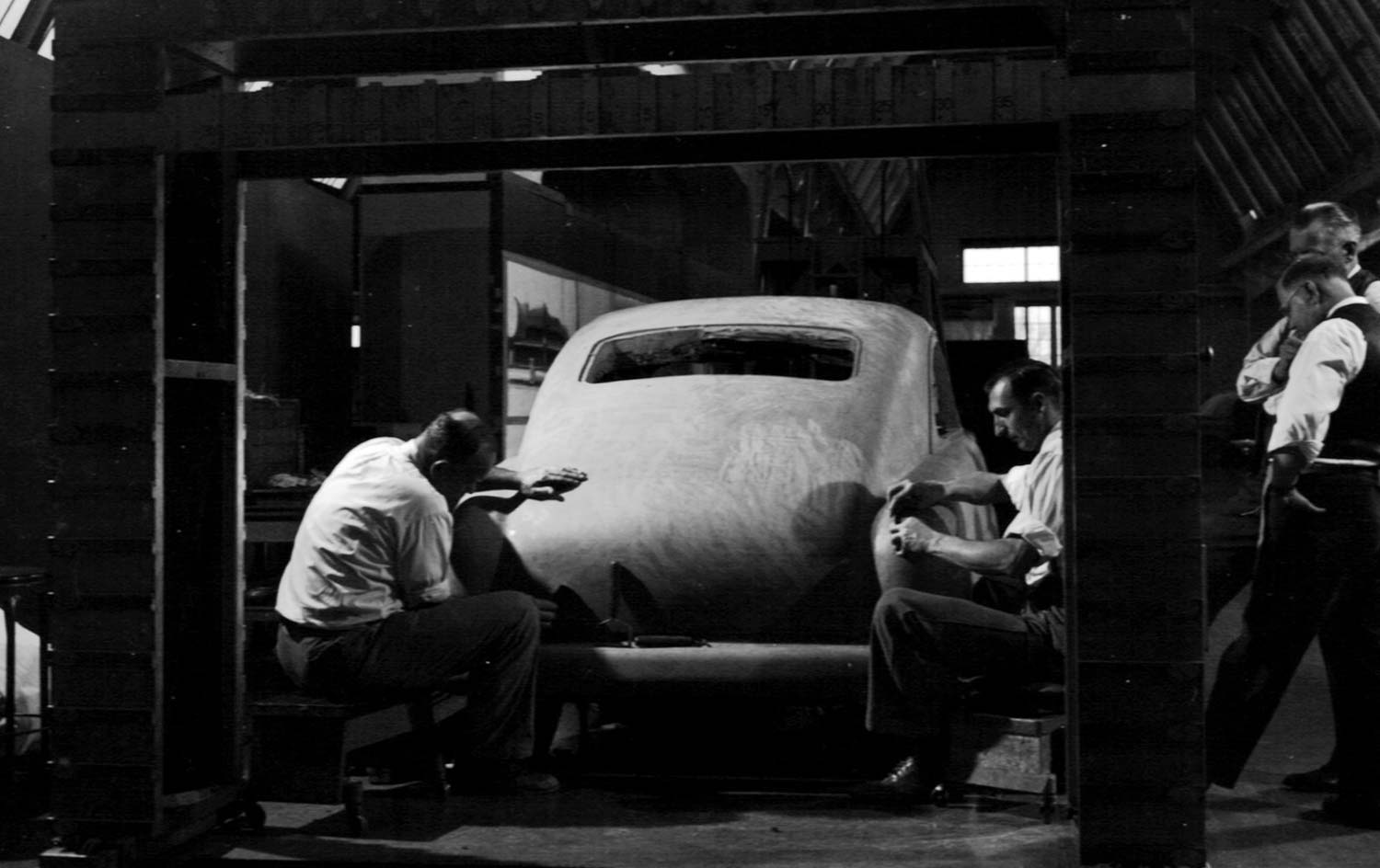
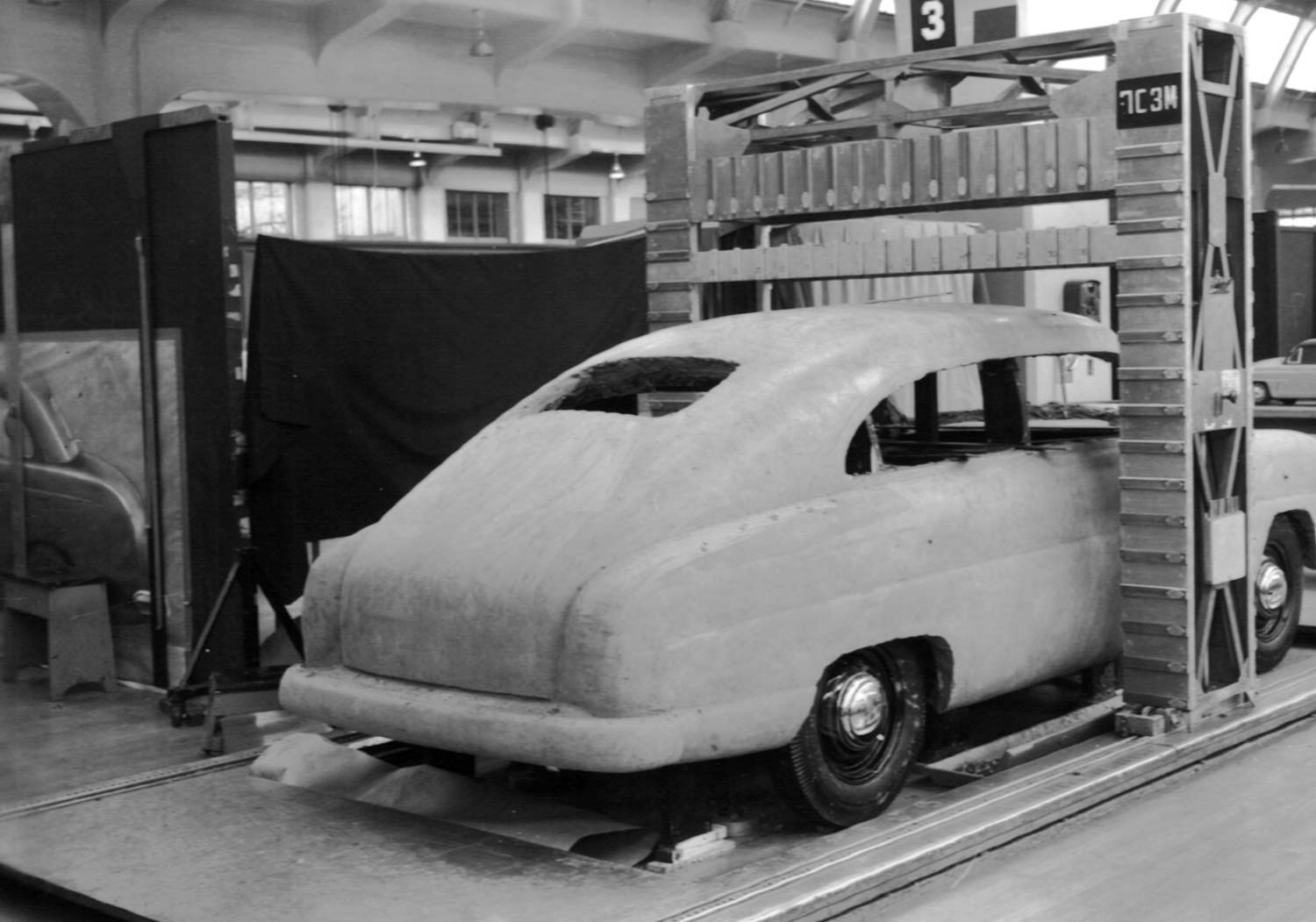
What in impressive collection of historical photos showing design progress in clay. Not many people are fortunate to be part of the secret inner workings of an automotive design studio. People outside the industry often erroneously view automotive design as glamorous, what is glamorous is the finished product. In truth creating a full size clay model was often back breaking physically demanding work especially when these photos were taken prior to the introduction of computers.
Interesting that at some point, a fastback version of the 1949 Ford was under consideration: it’s visible in several of the photos, and that many of Ford’s competitors, including Chevrolet, Nash and Hudson, would offer versions of their car lines in fastback profile (although, notably, Dodge and Plymouth would not).
Actually, Plymouth did have a 49-50 fastback…rare, however, as did Dodge, on the Wayfarer platform. https://duckduckgo.com/?q=49+plymouth+fastback&t=newext&atb=v275-1&iax=images&ia=images
Interesting to see the genesis of the “Shoebox”, the #2 choice for early custom cars (#1 being its stablemate, the “Merc”) and the original ideas for the front end. I always thought the ’49 had a busy front clip, but now I see that it actually was quieted down from its early conception. Yet another “who really did it?” piece. Well done.
PS: The only thing missing here is an article on Briggs Cunningham’s Fordillac cars he intended to use at the 24 Hours of Lemans, which were, well, ’49 Fords.
What a great story and collection of photos! It was fun, at least for me, to see some of the guys I knew, during my years at Ford Design Center, in the photos. I think one of them, Al Sartor, is seen working on the center of the grille that held spinner later on.
Among us designers, later when I showed up, Bob Koto & Bob Bourke, we felt both contributed to the styling of the ’49 Ford in good measure.
Ron Konopka described the design process perfectly. While glamorous to those not in the trenches, it was often back-breaking work and highly stressful.
The building where the ’49 Ford was styled, was the “Triple E Building” & I worked there when we were doing the interior of the ’64-1/2 Mustang.
I was jobbed into Triple E 1972-74. I thought I had walked around the entire building, but never saw anything resembling a studio. I did see a few pallets with hipo Ford engines in plastic in the south perimeter hallway, but that was it.
Where were the studio(s) there?
Studio is on the corner of village and oakwood. On the other side of Oakwood from EEE
WOW, what a great story….I enjoyed Philip Paynes reminiscing of the ’49. There was another individual who may have been involved in minor details, a Bob Thomas?…
I personally believe the ’49 belongs in the Museum Of Modern Art. The beauty of the Bodyside section, simplicity is truly wonderful.
Note. I happen to also enjoy the Modern interpretation of the Jay May’s team of the concept Ford Forty-Nine…..as a fantastic 2001 retro design statement still relevant today.
Ford should consider building on an electric modular platform. It would appeal to a huge base of automotive enthusiasts.
Cheers
George walker’s input on the 49 Ford launched his being promoted to become styling Vice President. The basic concept of the 49 Ford design was actually a Nash proposal that George brought with him when he moved to Ford. Nash was not happy.
I’ve seen articles about the Shoebox design process before but never these photos. The two flat panes windshield always distracted me from the rest of the design which is really the first real postwar design, not owing anything of its basic design to prewar cars. The GM competition had a split windshield but made of curved glass. Ford managed a one piece curved glass windshield on the Cosmopolitan so it’s not like they couldn’t do it. It must have been a management decision based on production capabilities and cost.
I was first struck with the modernity of the Shoebox when I saw one parked next to a ’49 Chevy at a museum. I already knew that the Ford lacked the tacked on rear fenders and more prowlike hood of the Chevy (and the same but more so for Chrysler products) and the fender line right up to the windows etc. but what stood out was how curved and designed as a unit the Ford body was compared to the more linear Chevy.
From the rear you can see the beginning of the concept of the sides of the car being two walls with the body in between that reached its culmination in the 1961 Lincoln done by some of the same guys. The horizontal tail lights cutting across the walls with a bit of side sculpture leading to them was a brilliant idea.
And reference fastbacks: the Lincoln Cosmo had a fastback version but only for the first year—obviously an idea that seemed modern but was quickly going out of fashion—the Forward Look fins of the forties.
It’s my understanding that Richard Caleal played a major role in designing the 49 Ford.
He was inducted into the Automotive Hall of Fame in 2009. I attended that ceremony with his daughter, Mary Geo Stephenson.
Interesting to see the various front-end design workouts on the Gregorie clay model. Some like the one with the angled grille look better than others but none of them overall seem as good as the Bourke/Koto/Caleal design, which makes the other entry look somewhat dull and dumpy. I wonder how long the decision process took.
I always thought the grille spinner looked like an afterthought, but it really was the finishing touch that pulled it all together. Its proportions and curves were perfect, the right antithesis to postwar theme of simply enlarging the grilles of 1941-42.
The Koto clay model was produced on Koto kitchen table in Mishawaka, Indiana. That was the model that was submitted to the Walker team. Clearly the clay photos depicted in this blog represent Ford designers efforts post the Koto submission. According to Koto, Bob Bourke’s involvement was purely “guy talk” when visiting the Koto home. He was pretty pissed years later when Bob Bourke claimed responsibility.